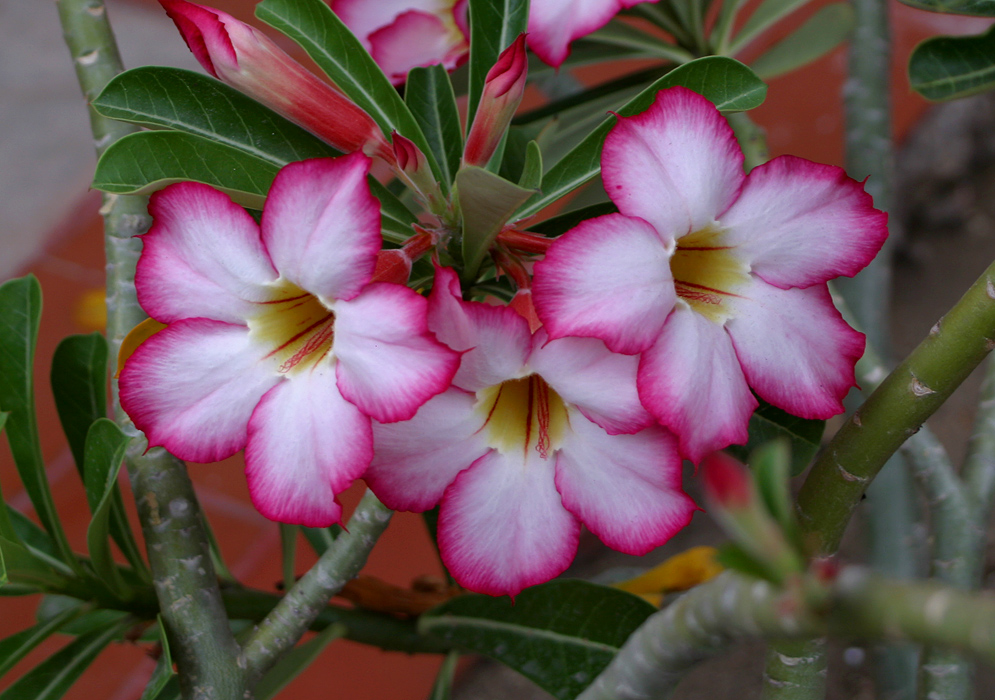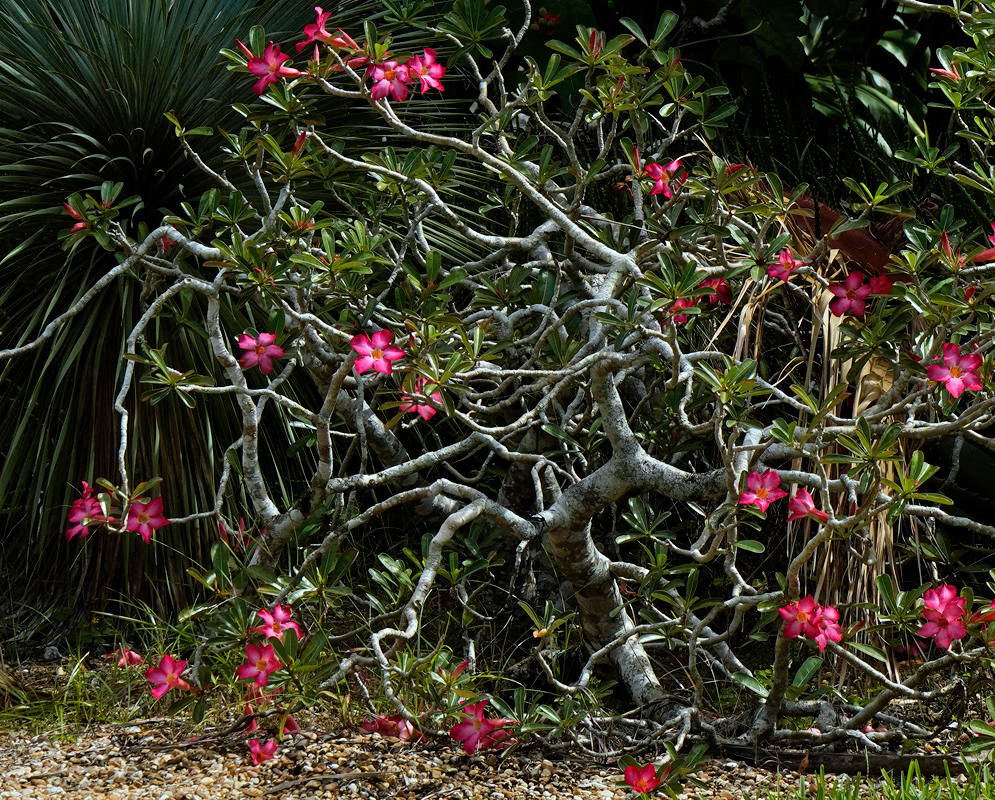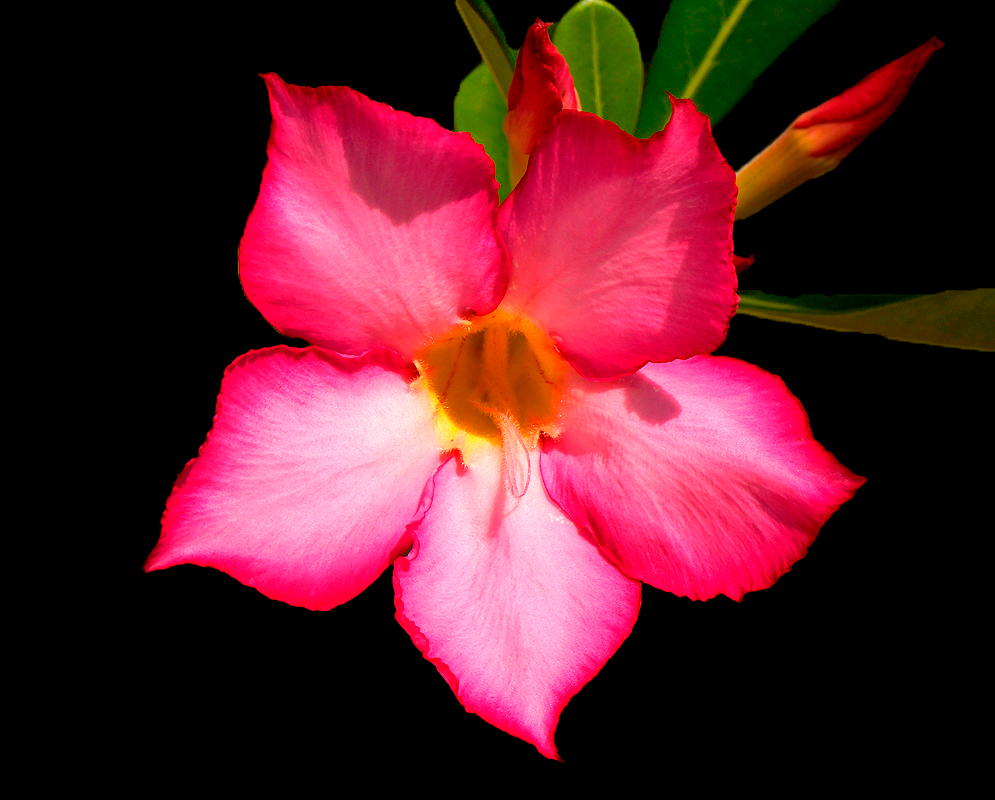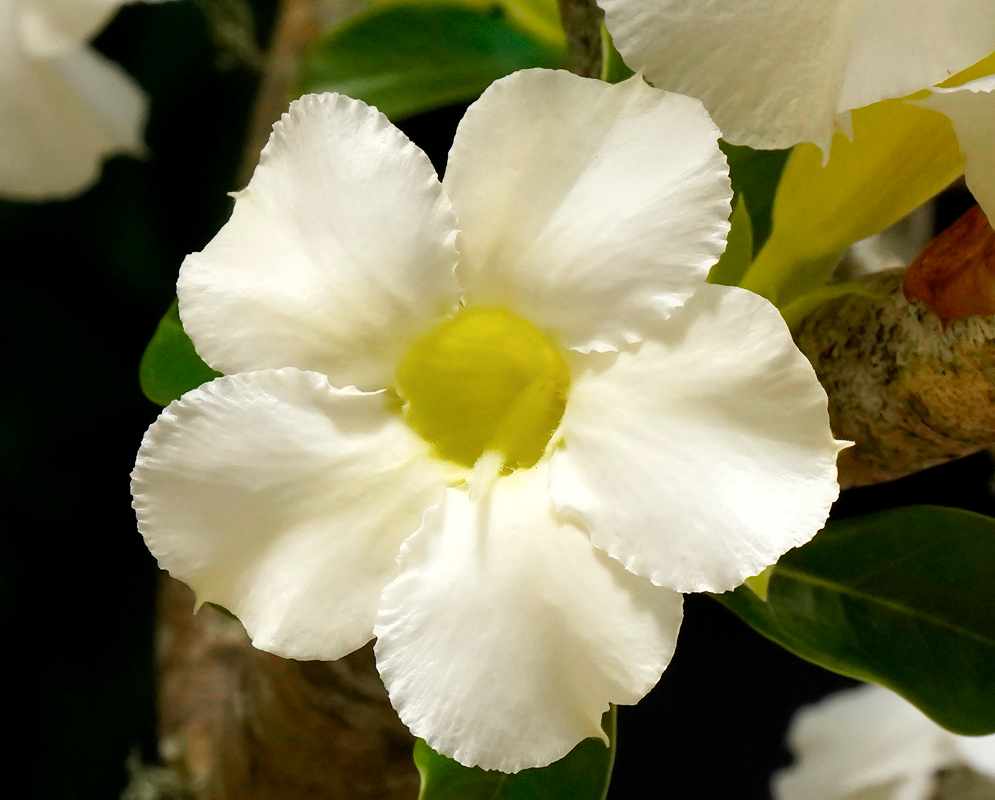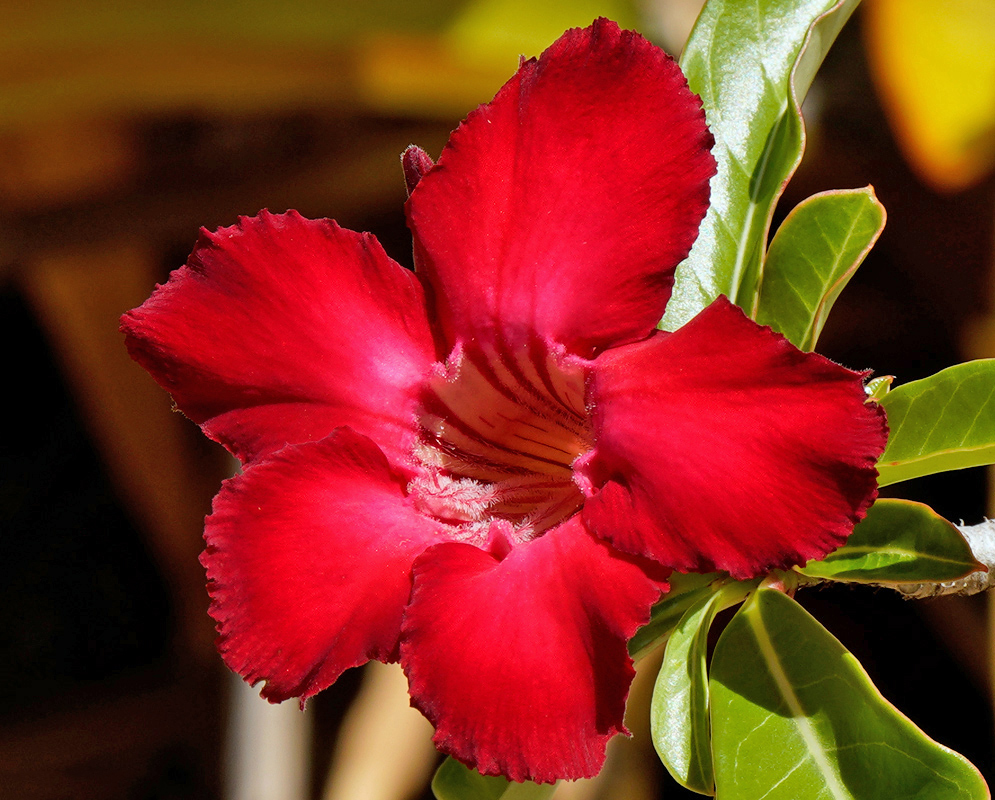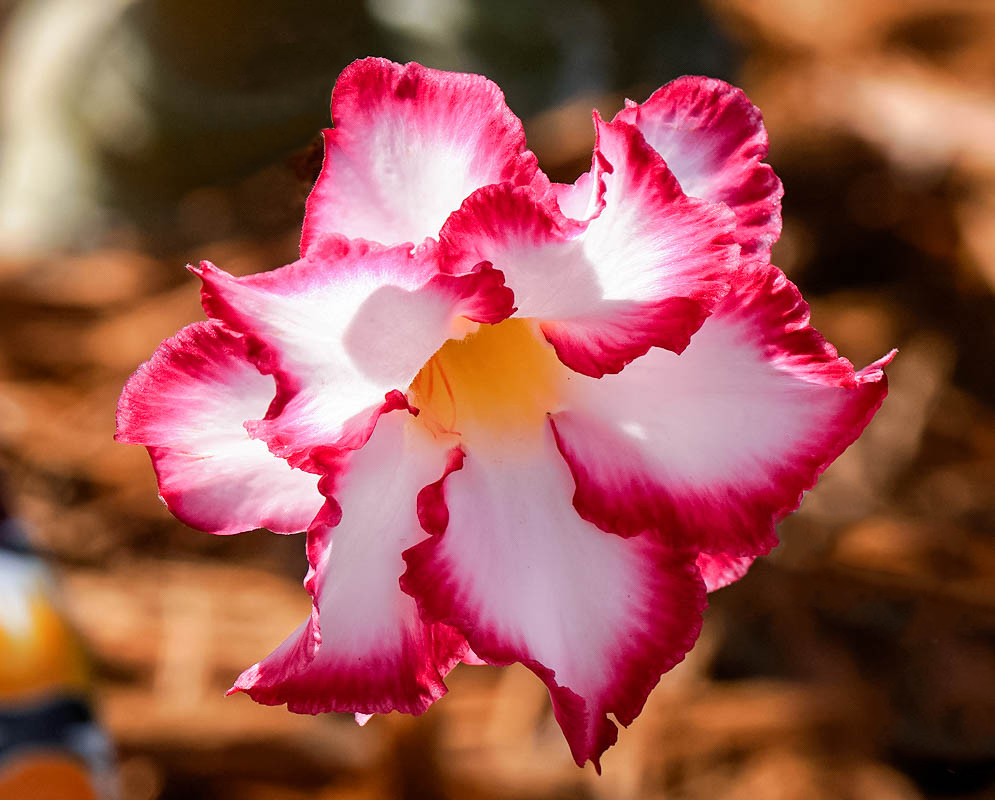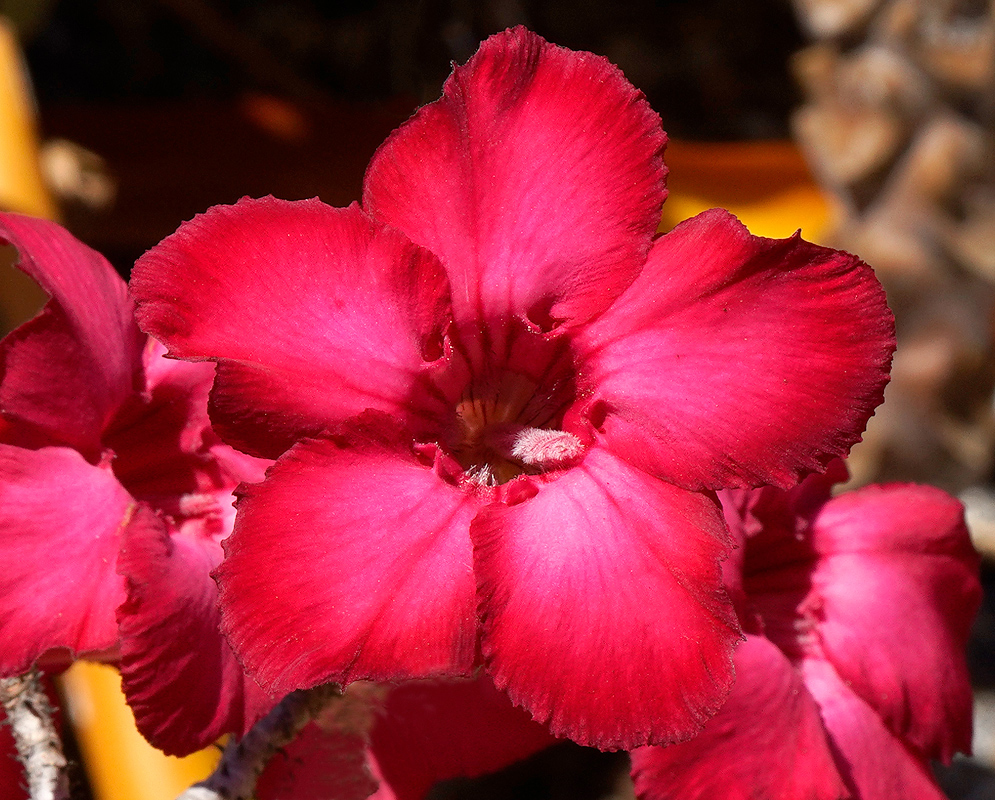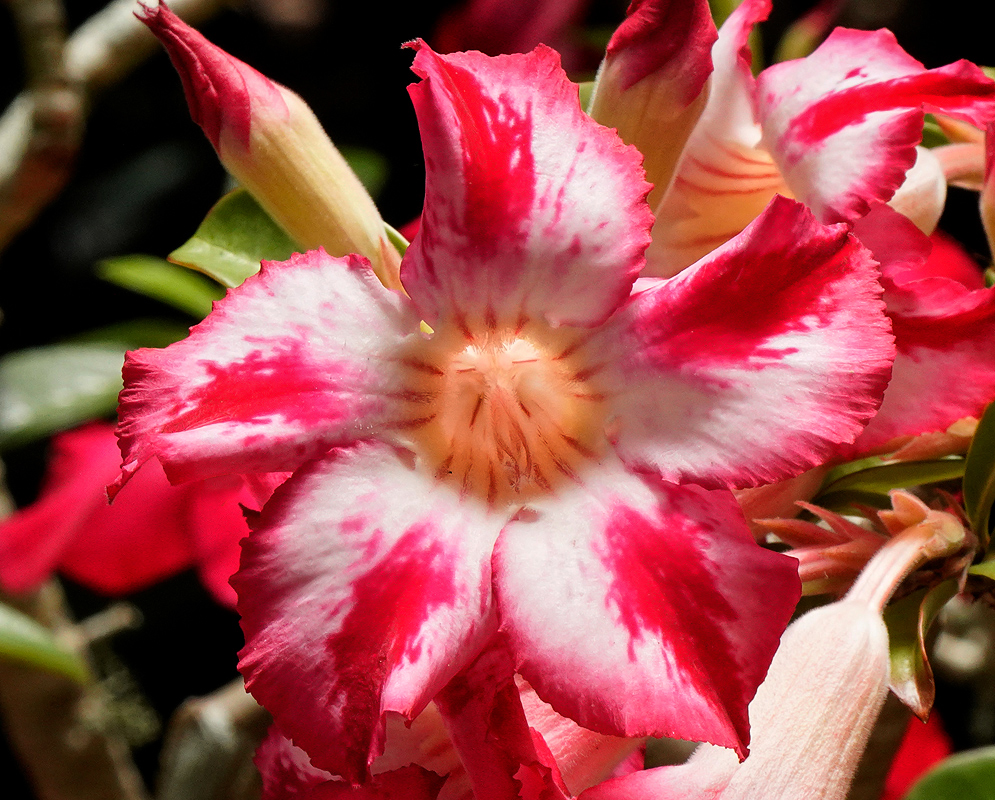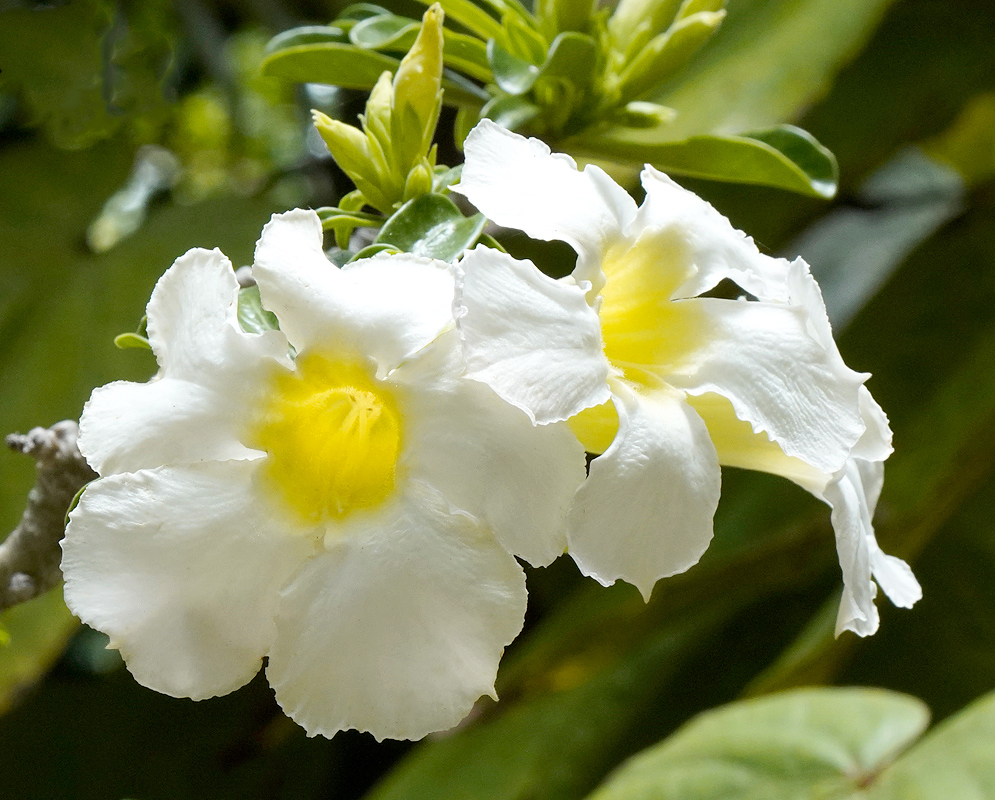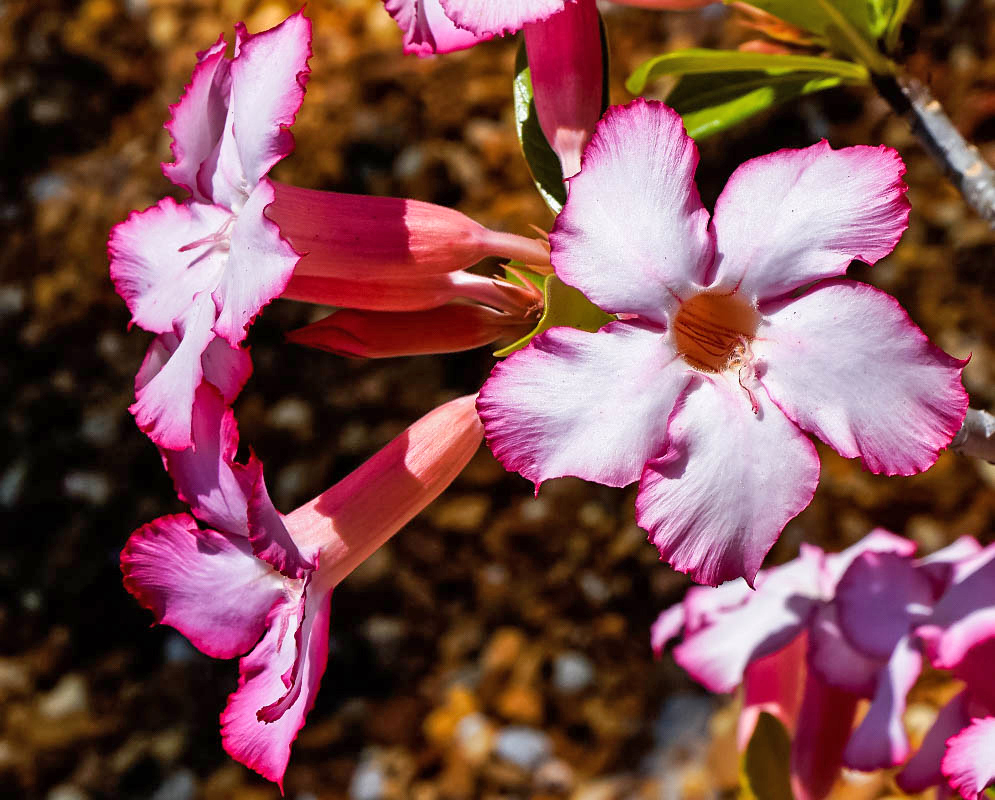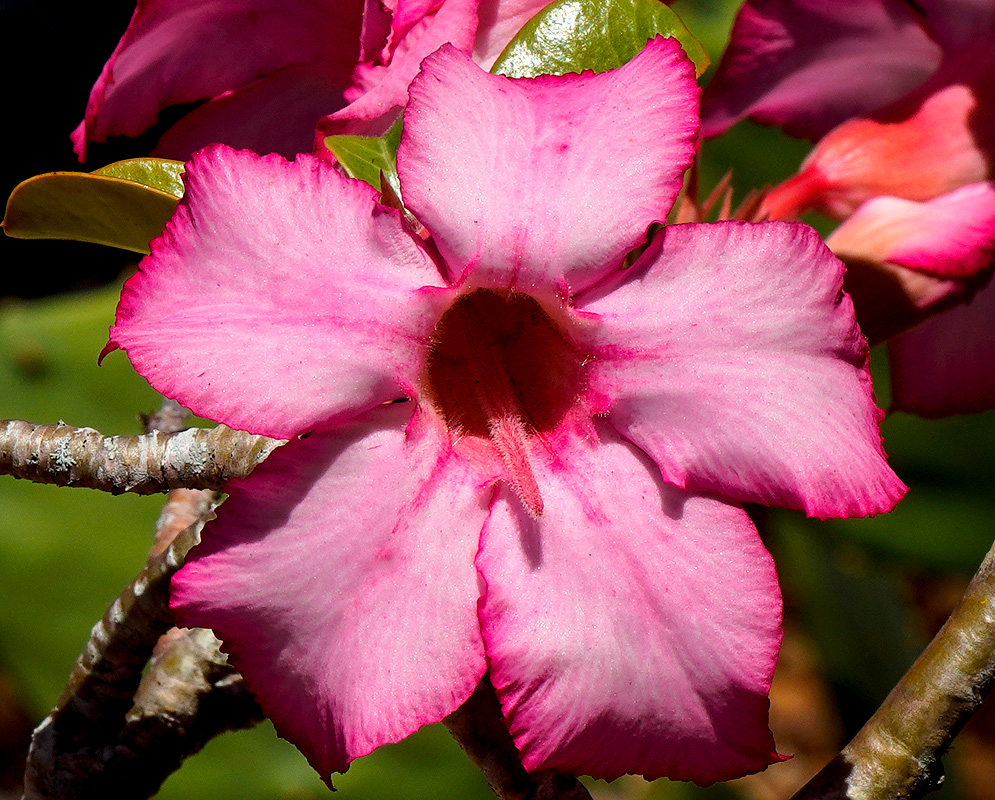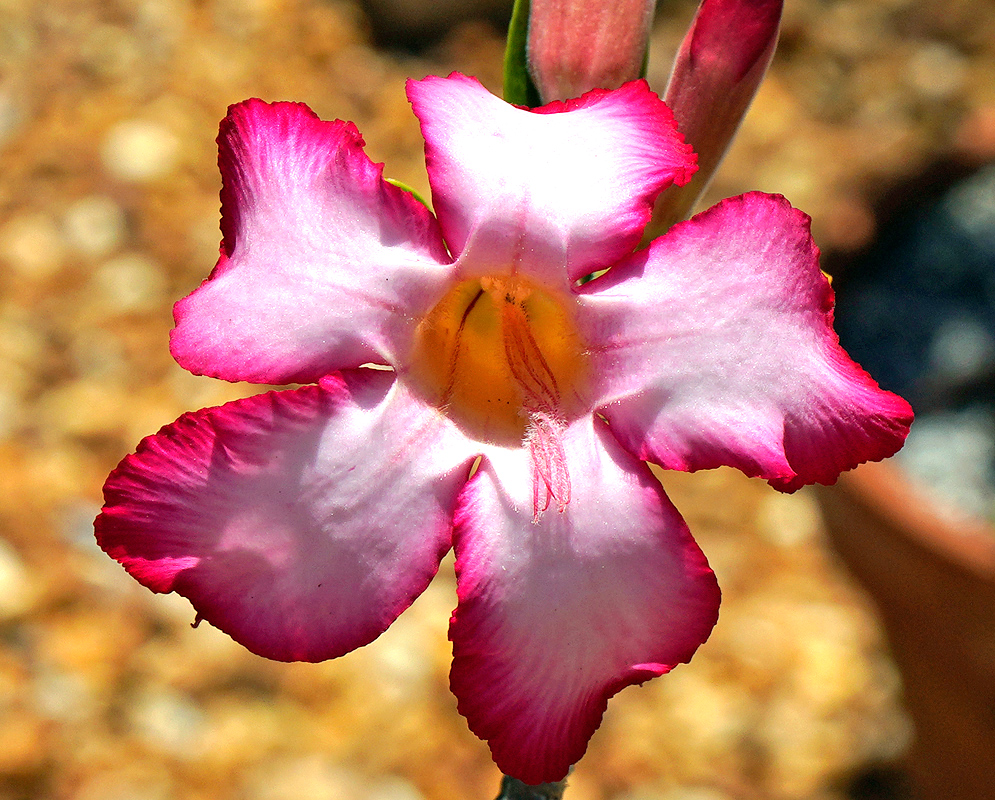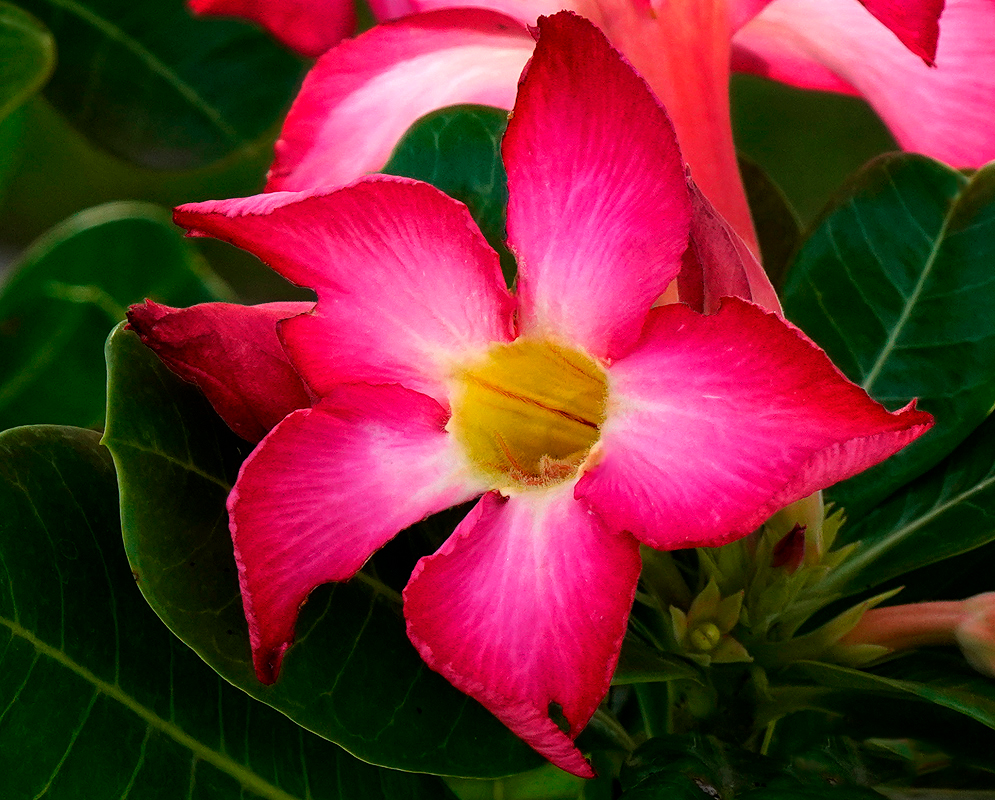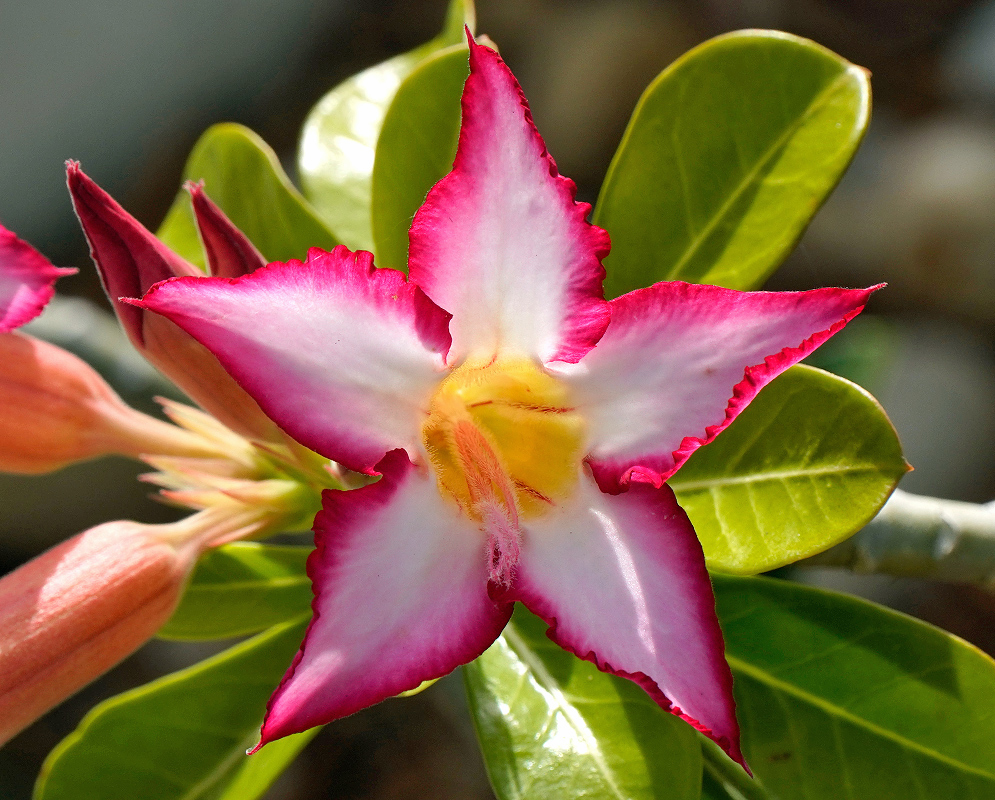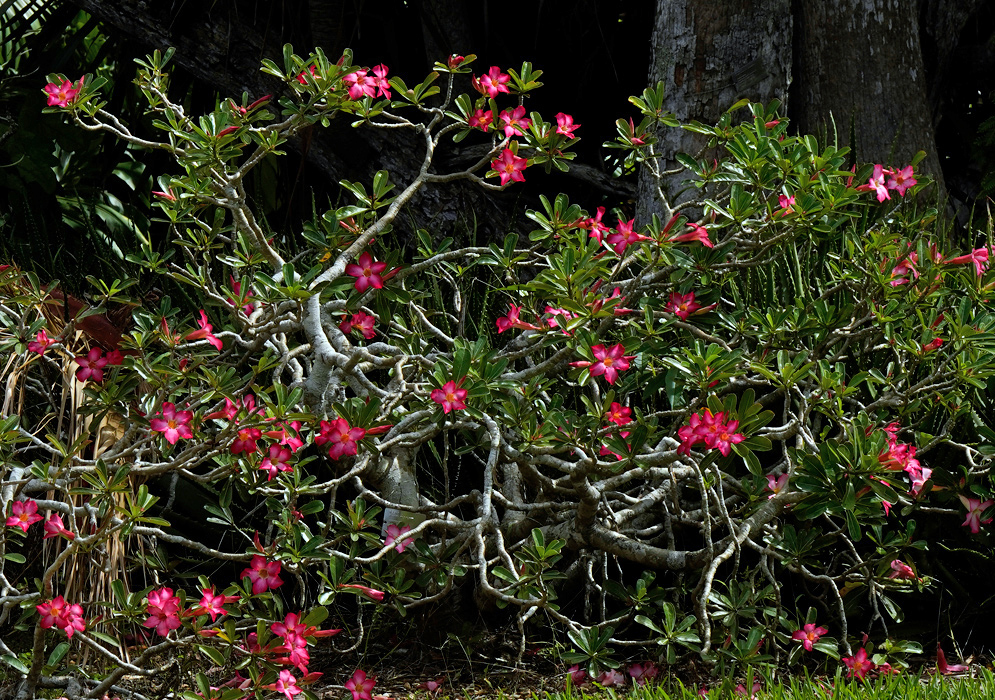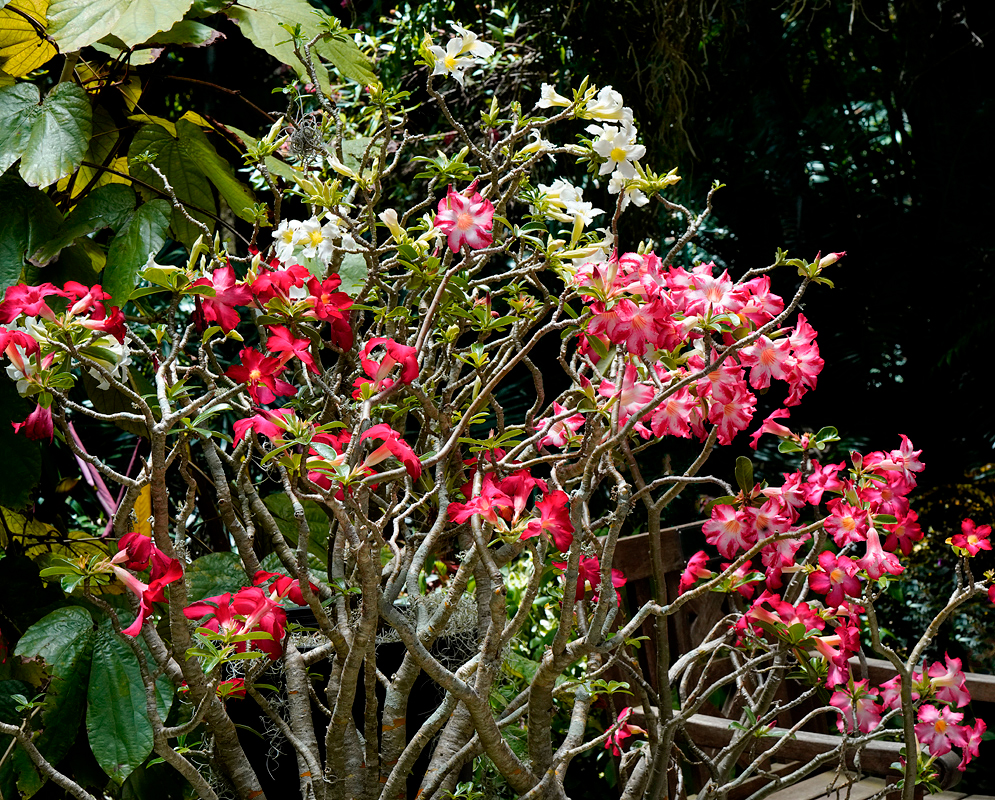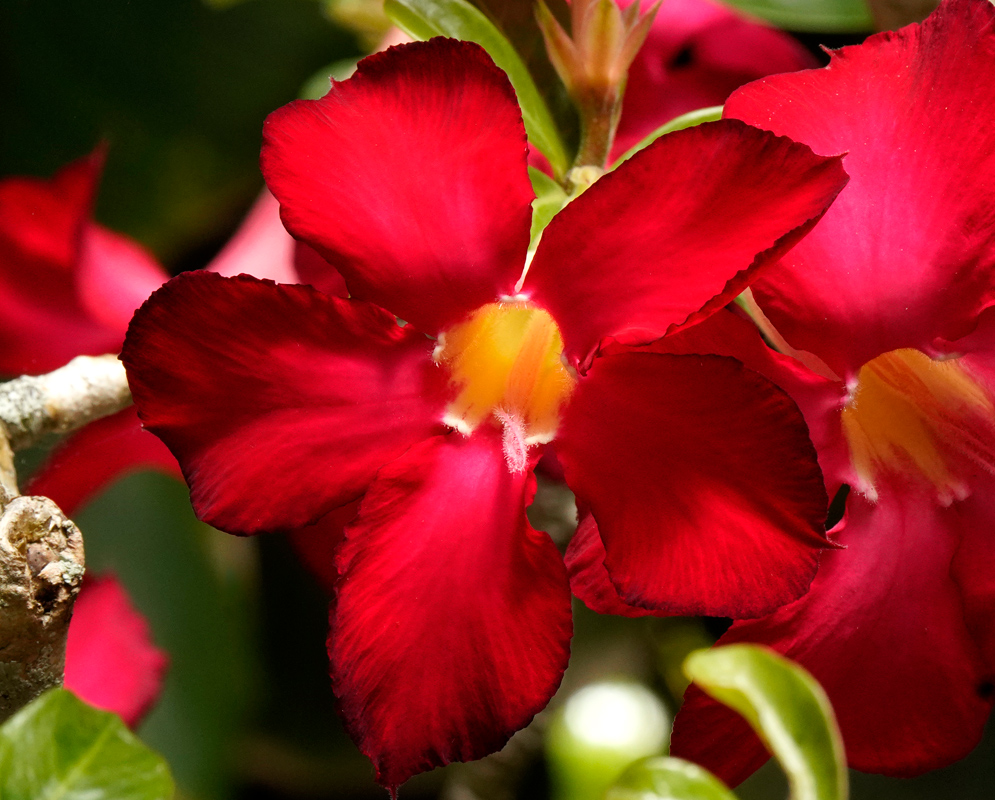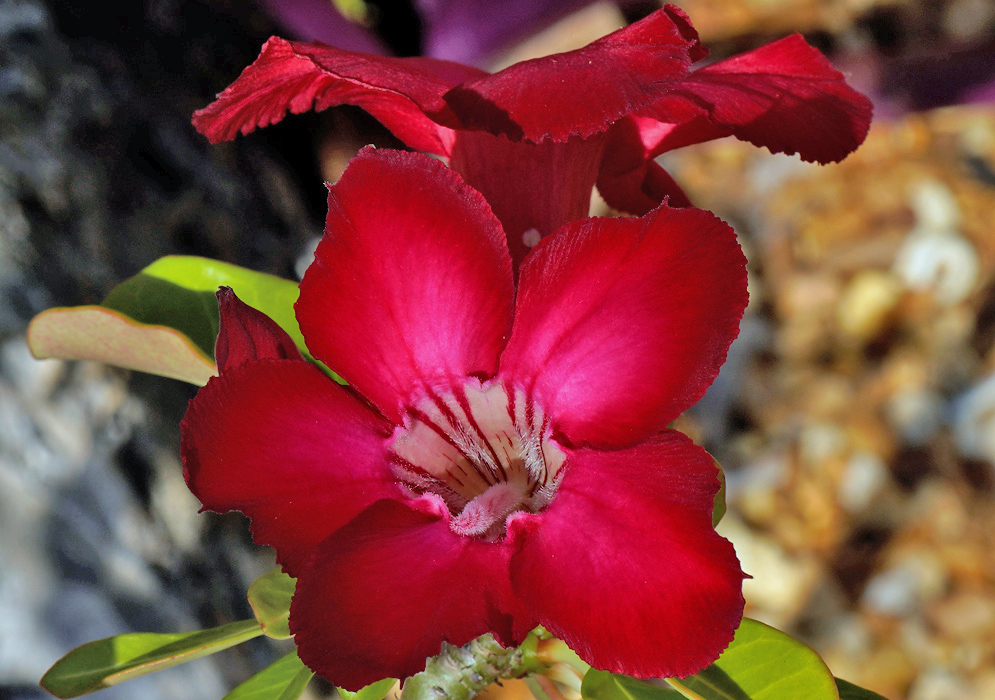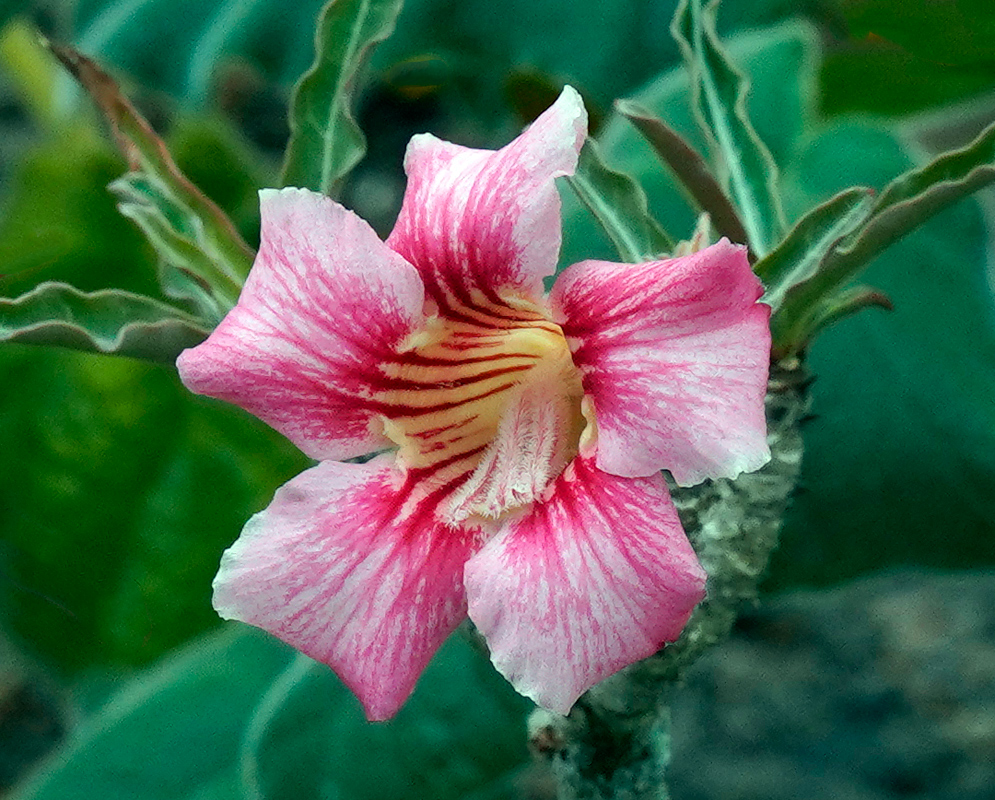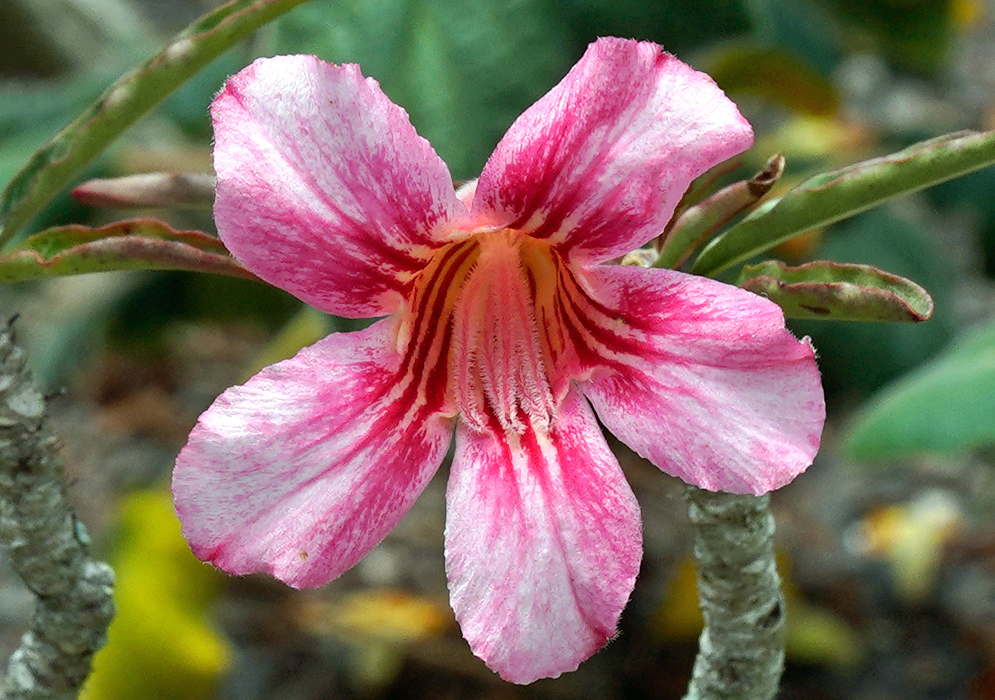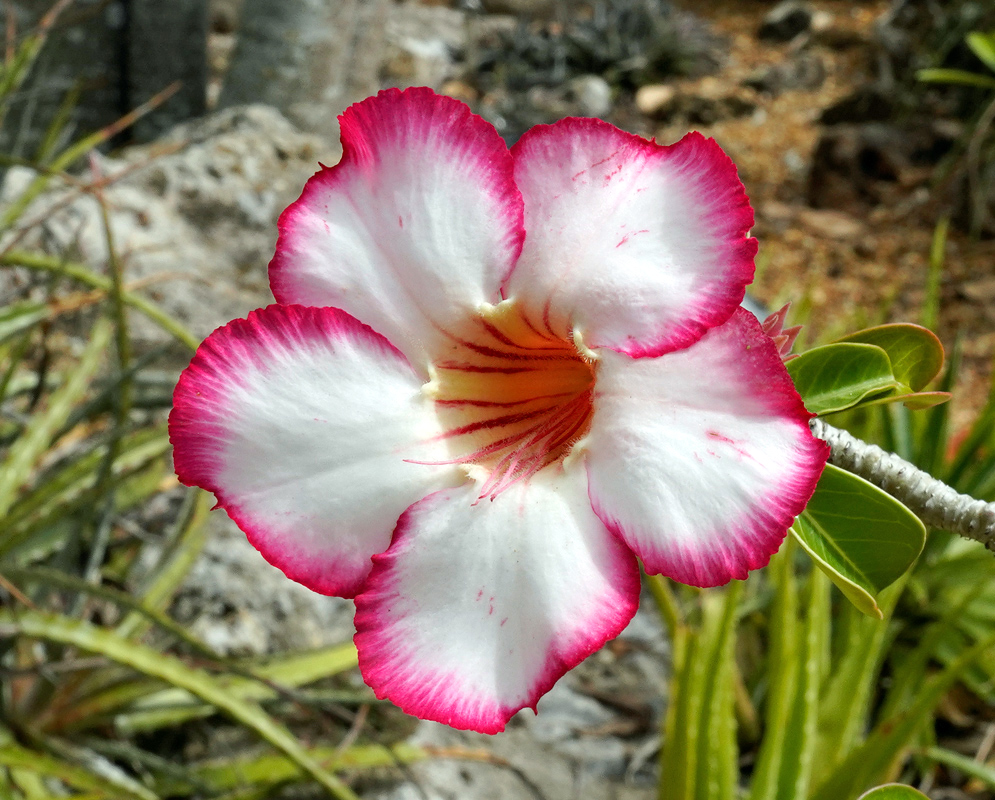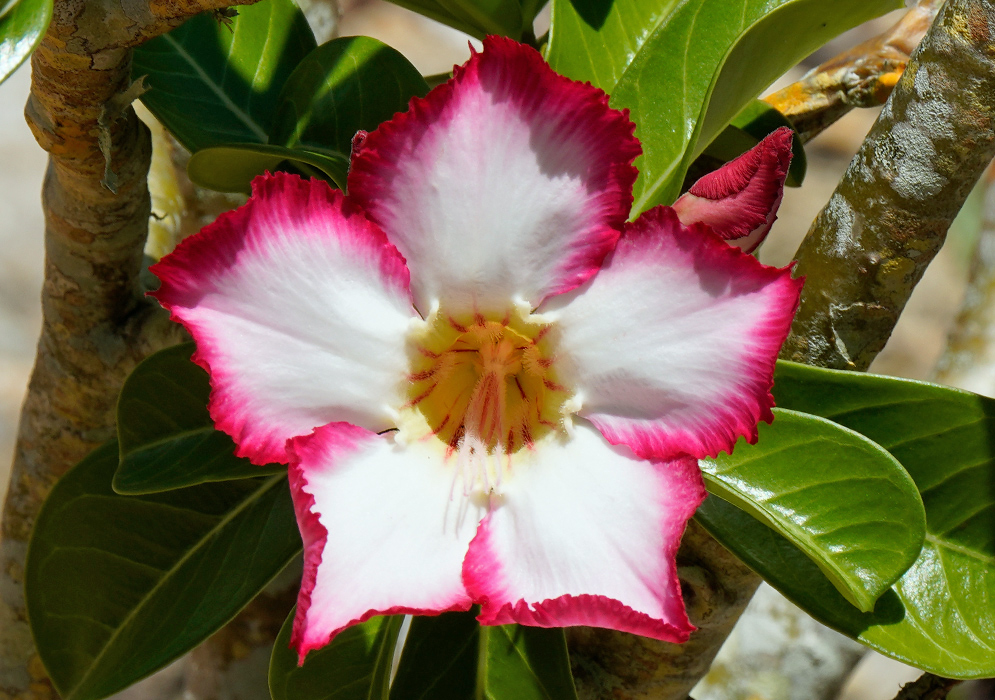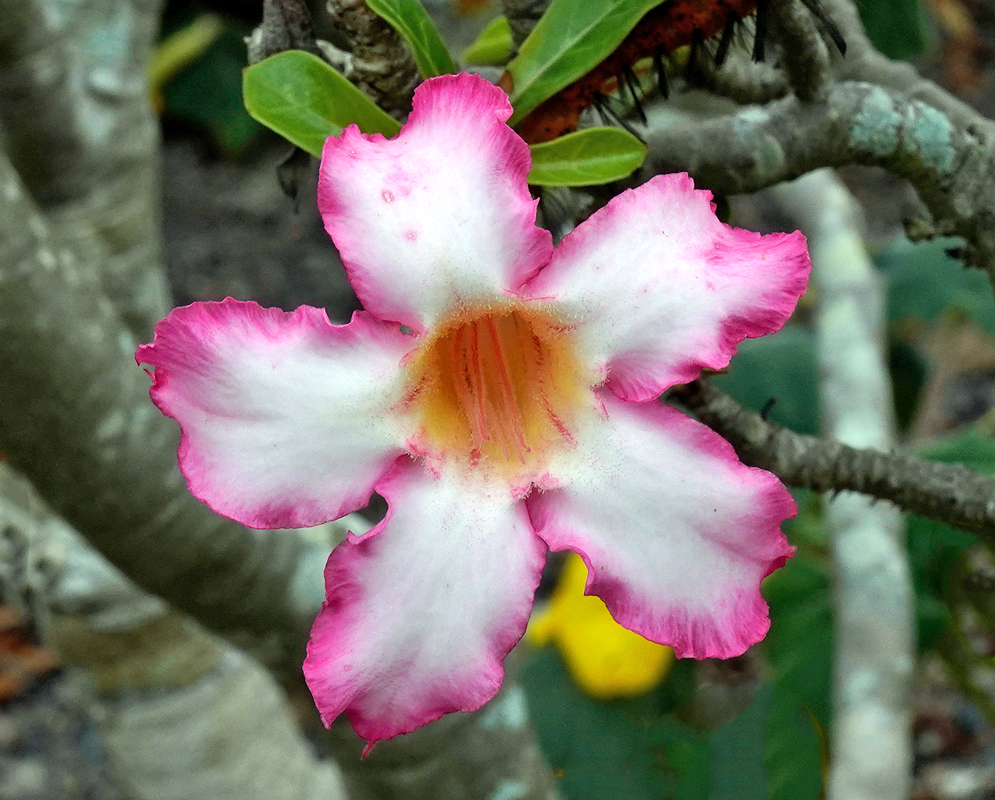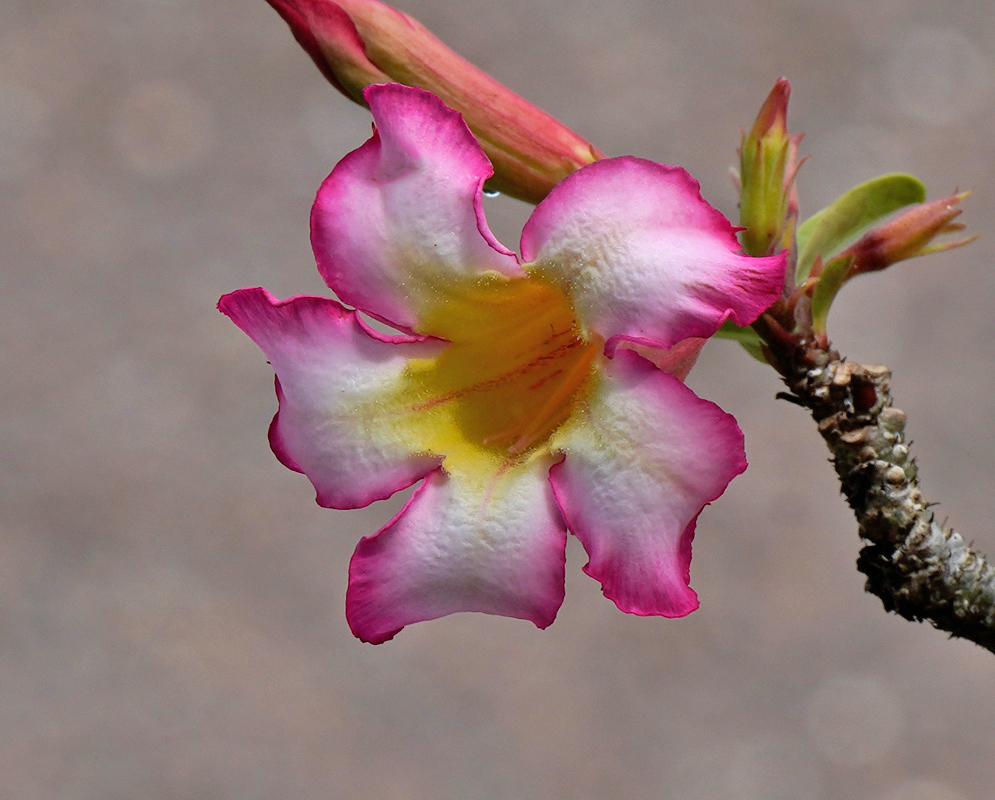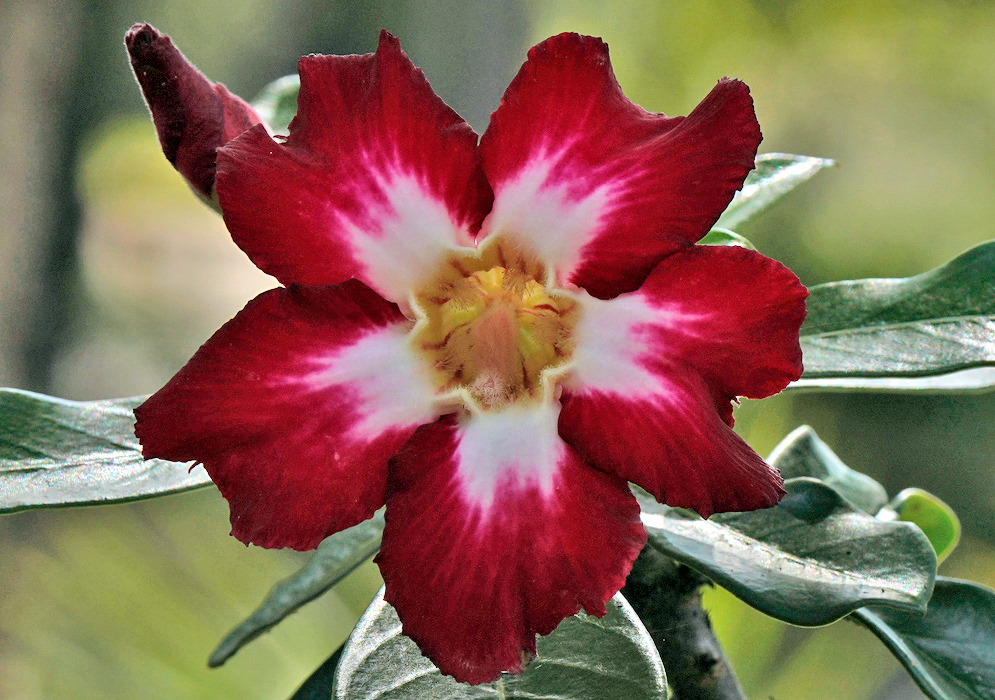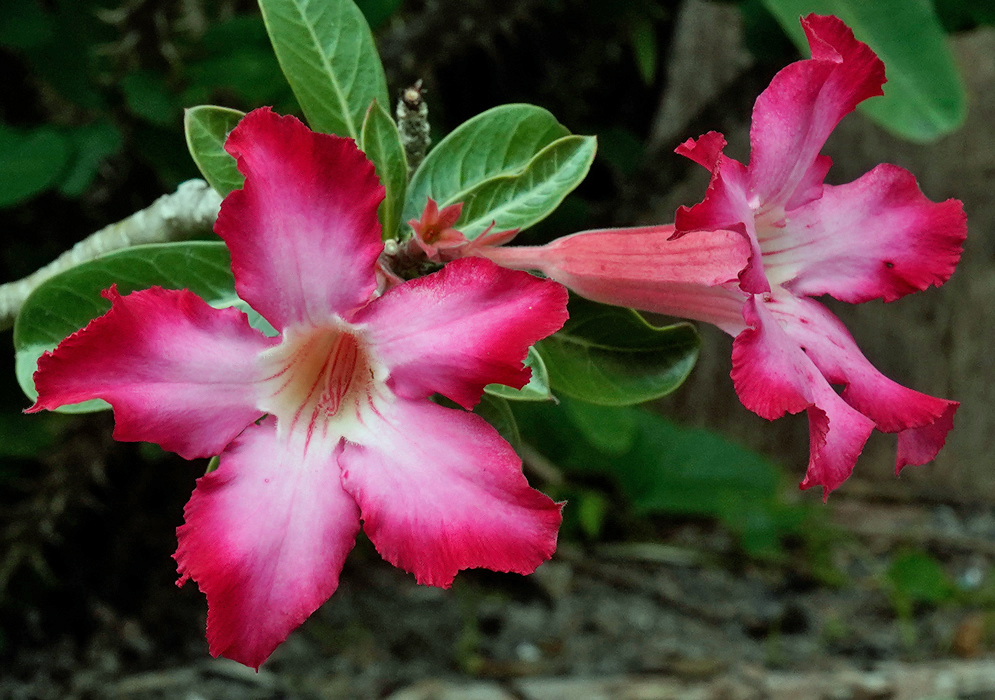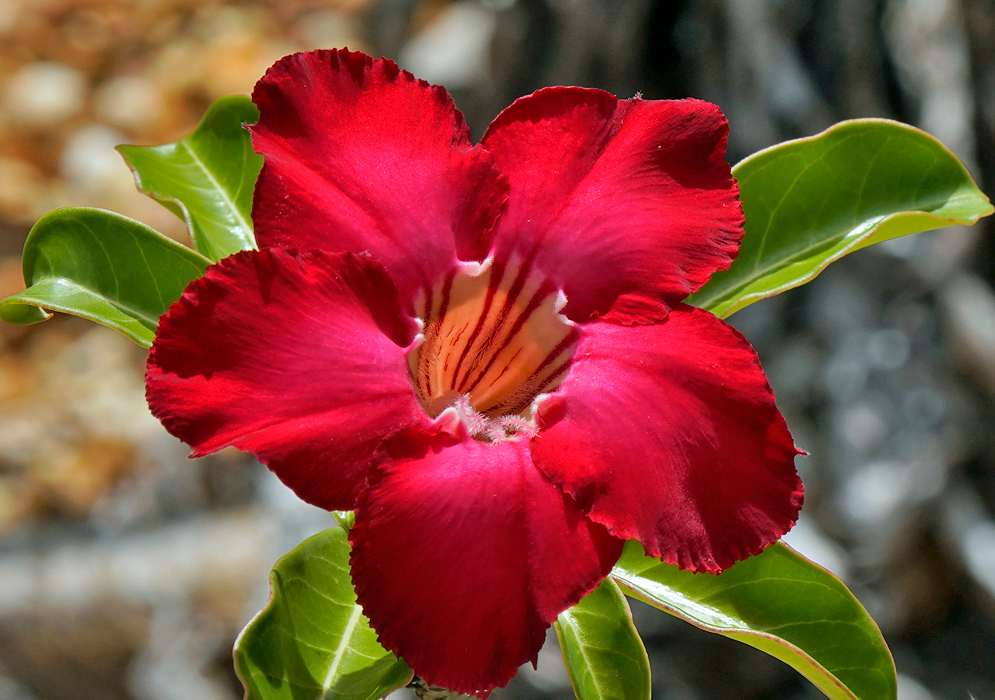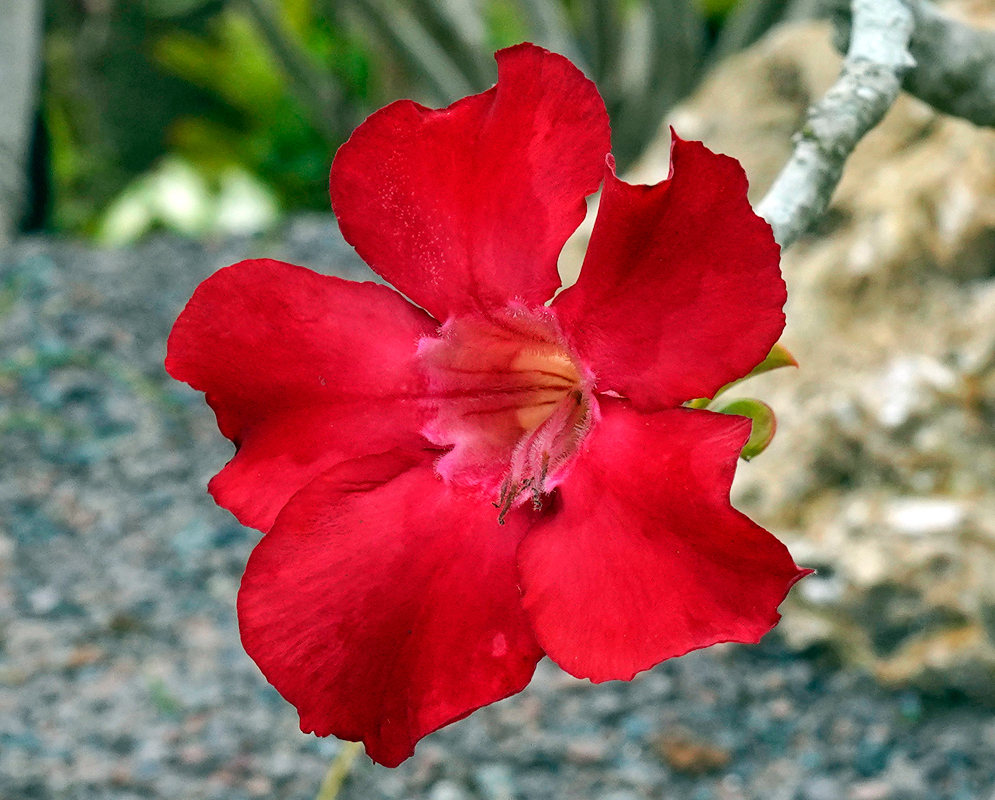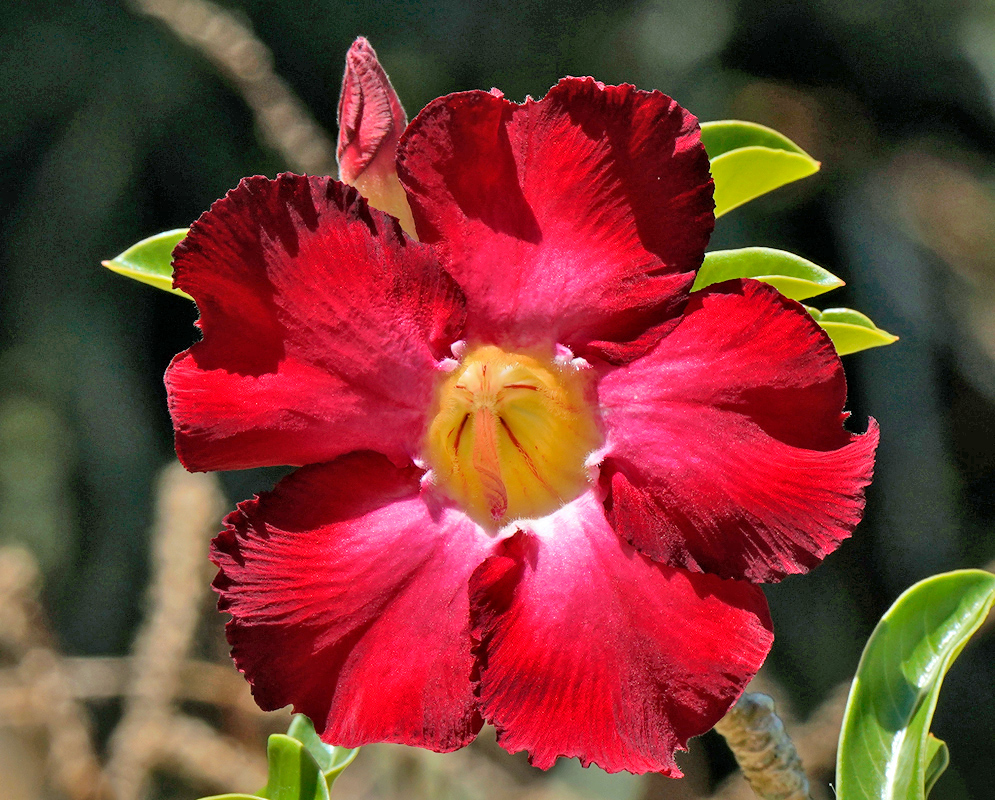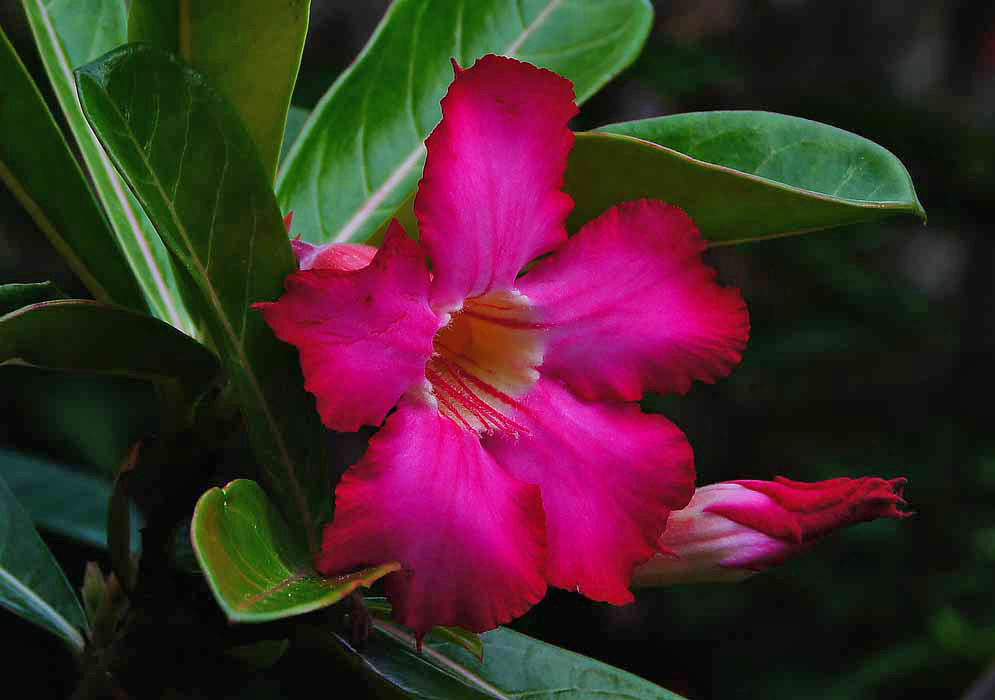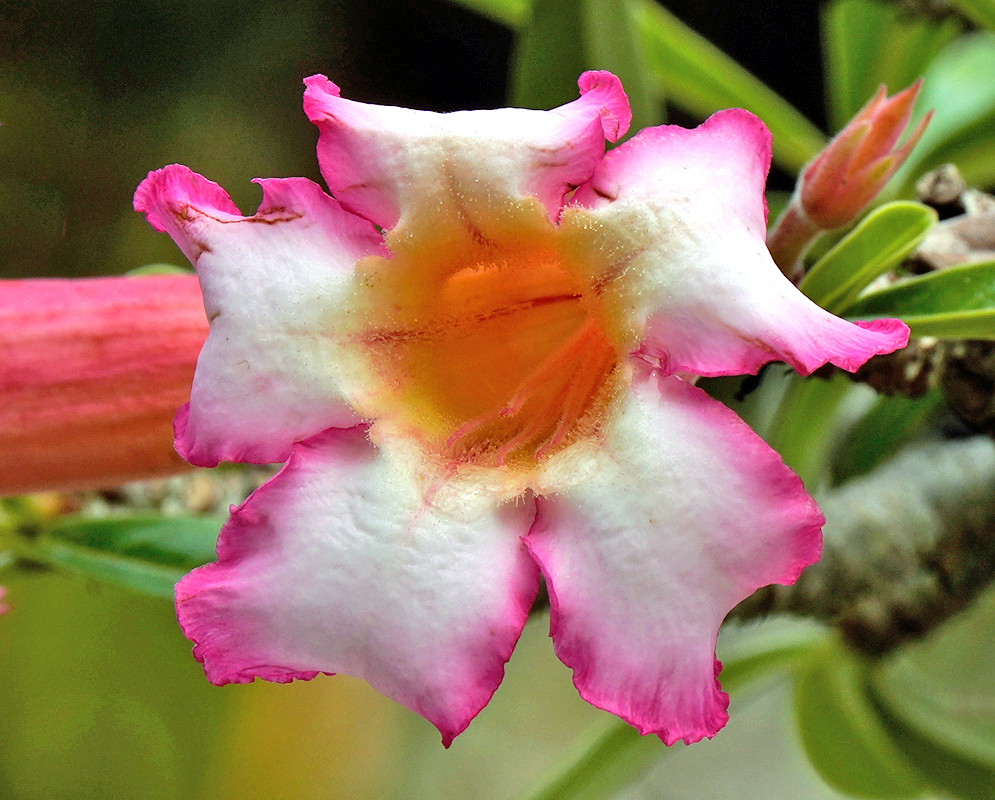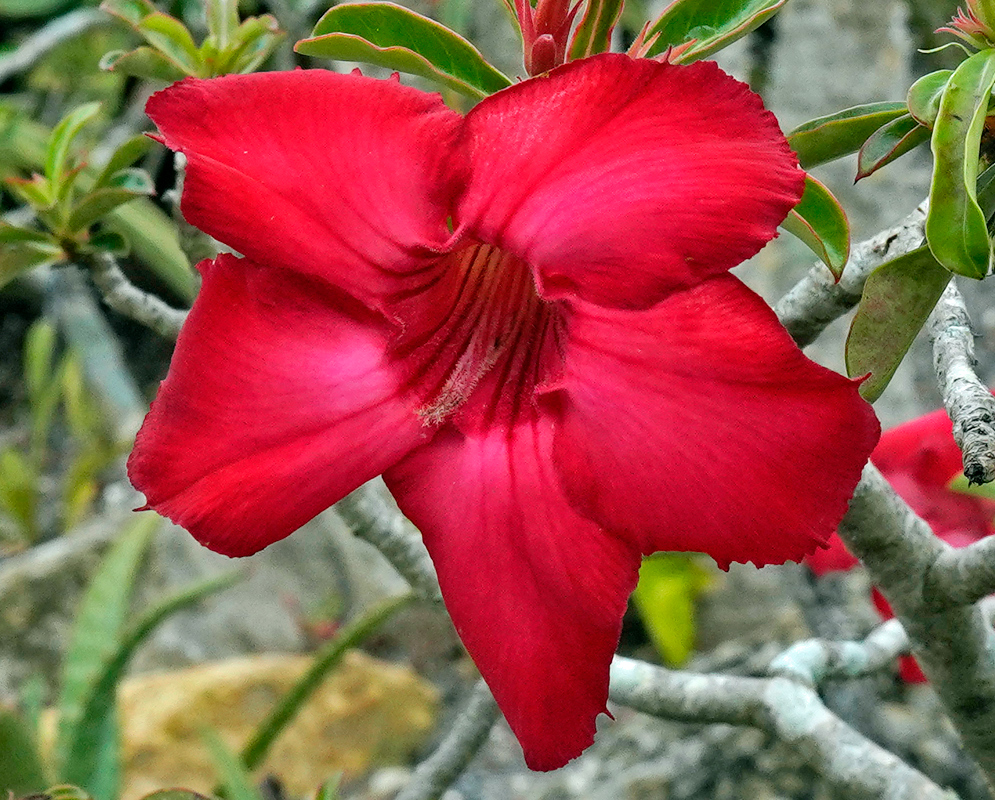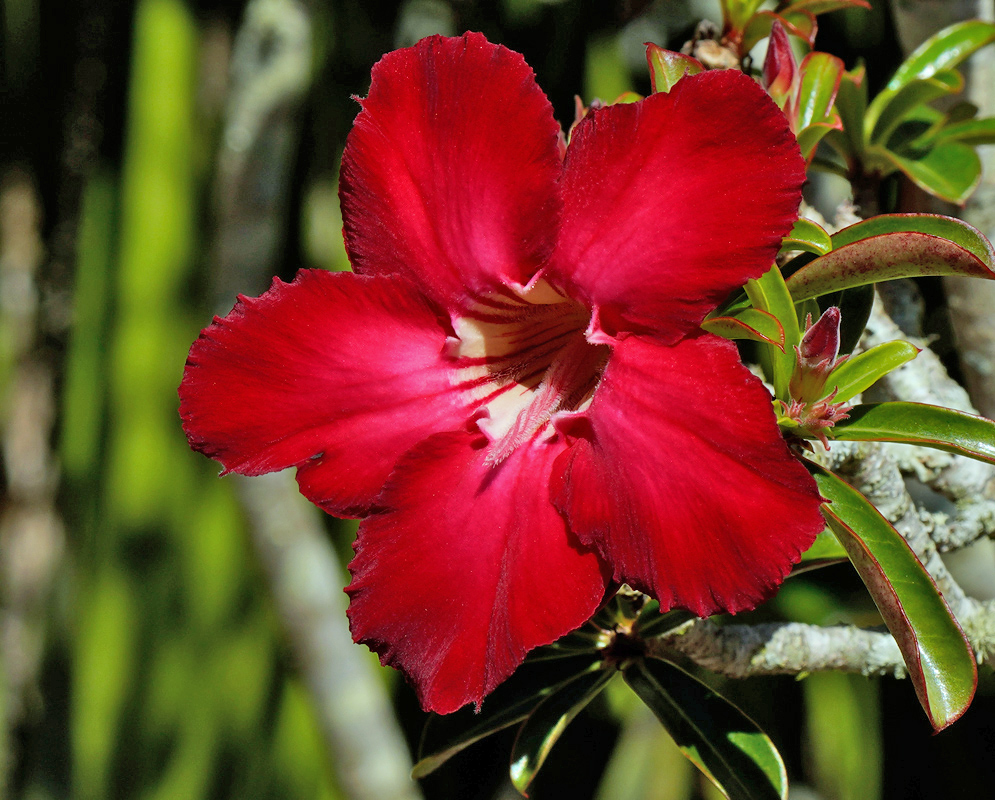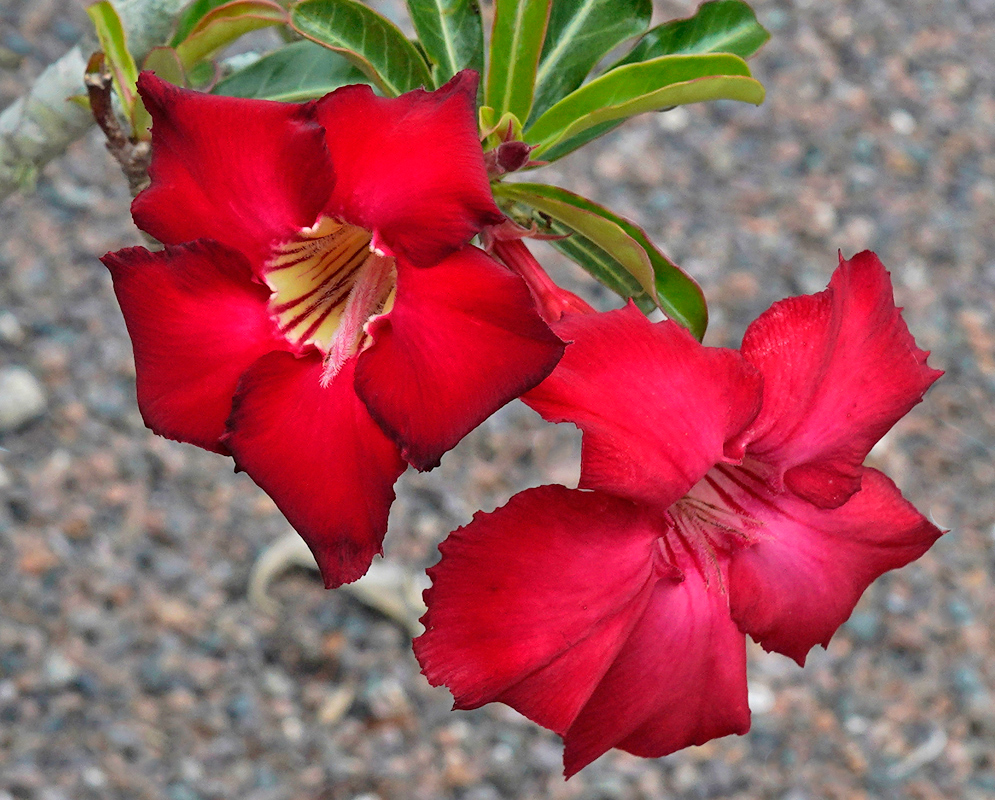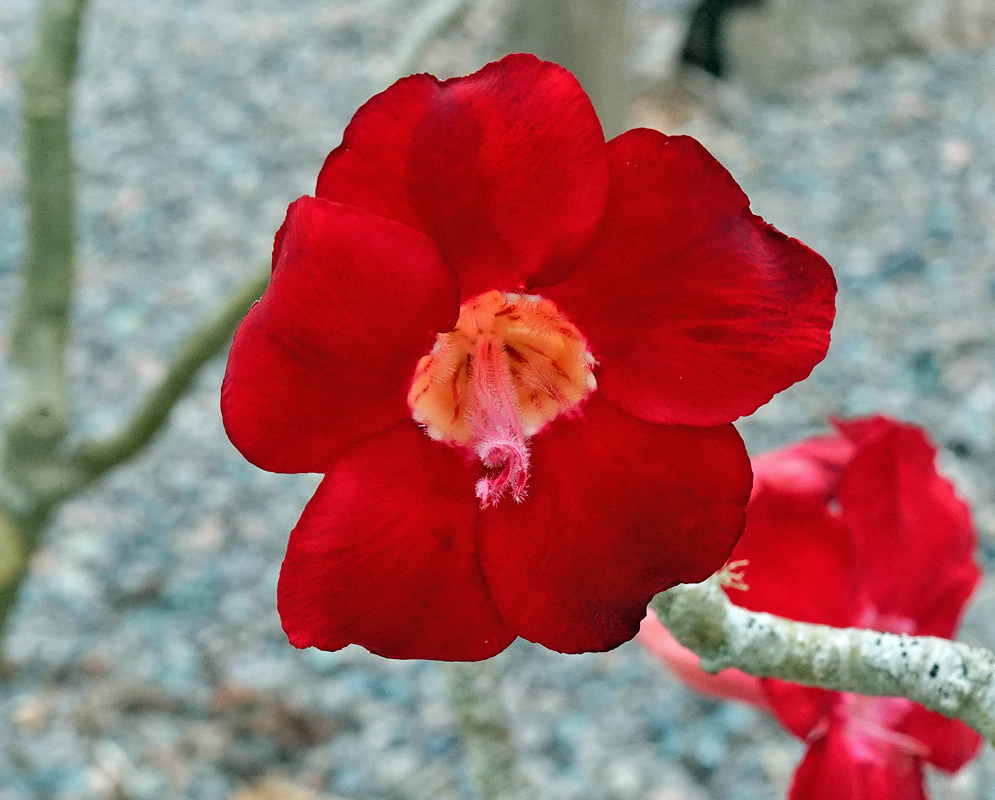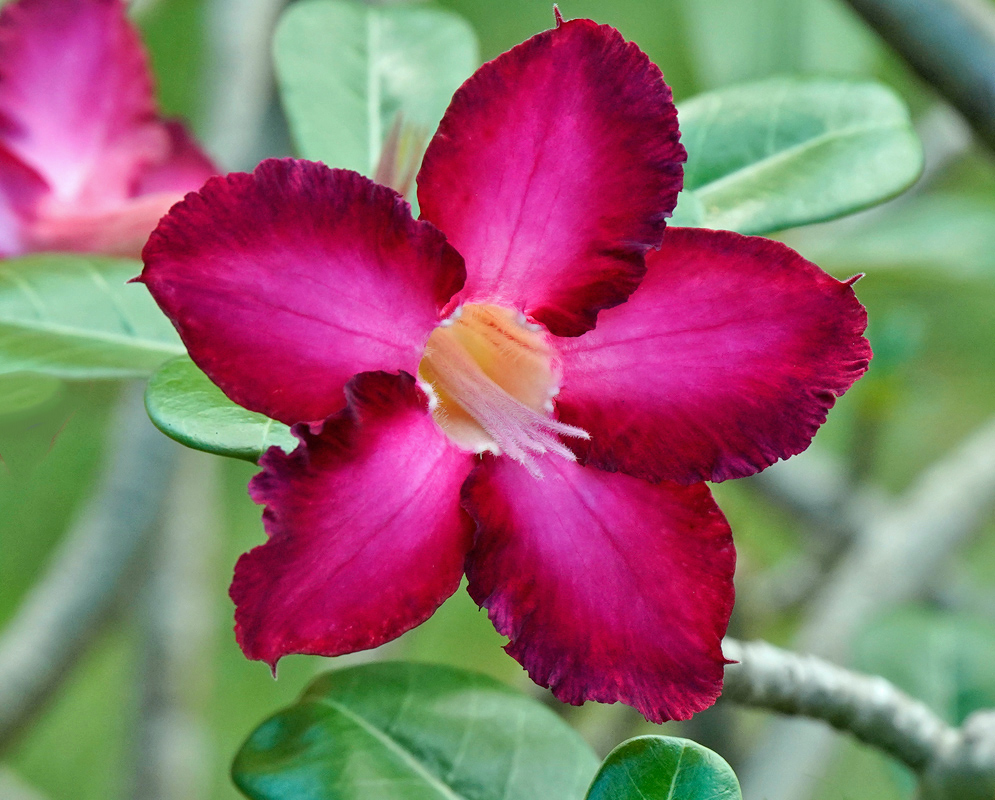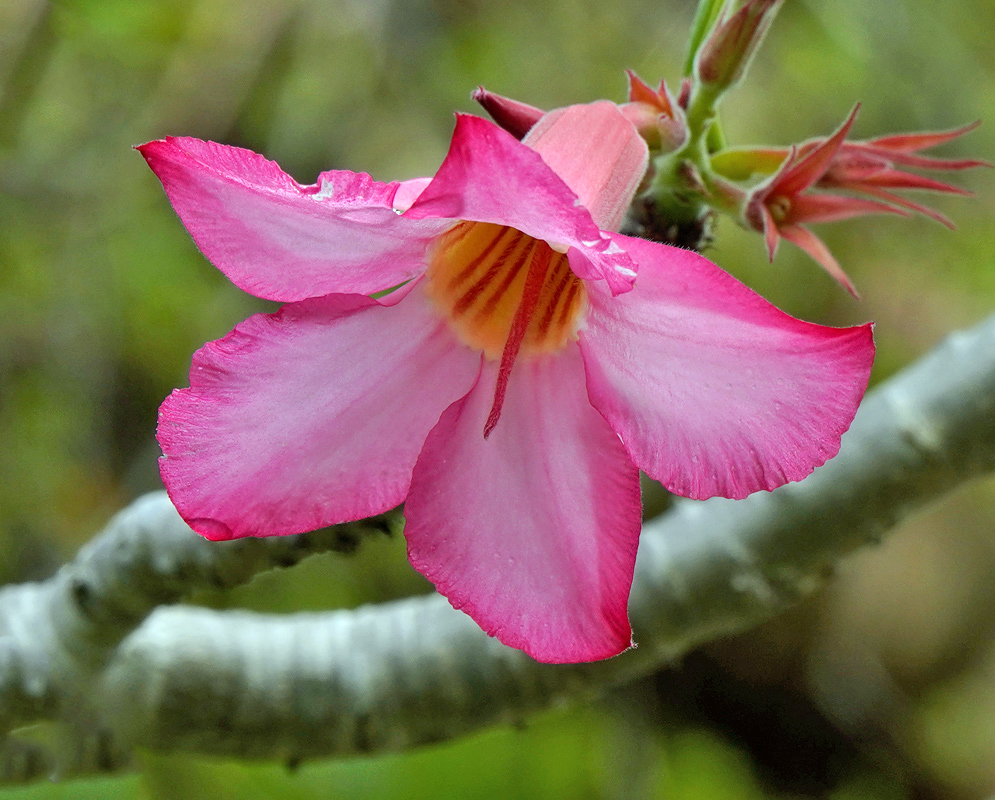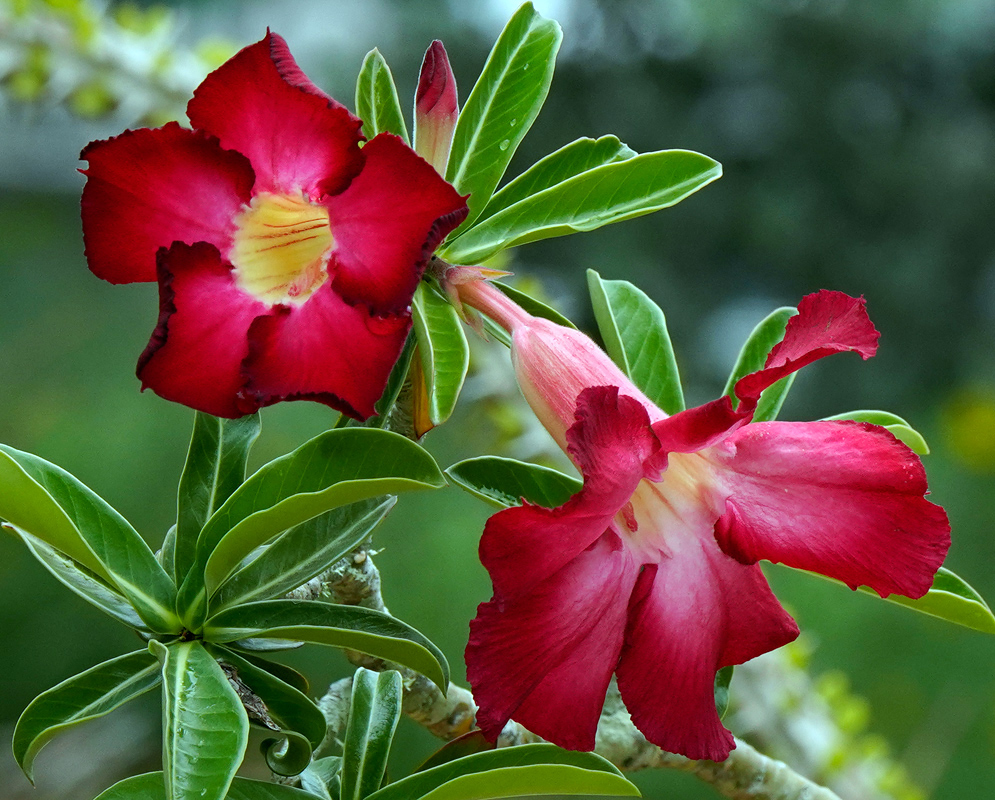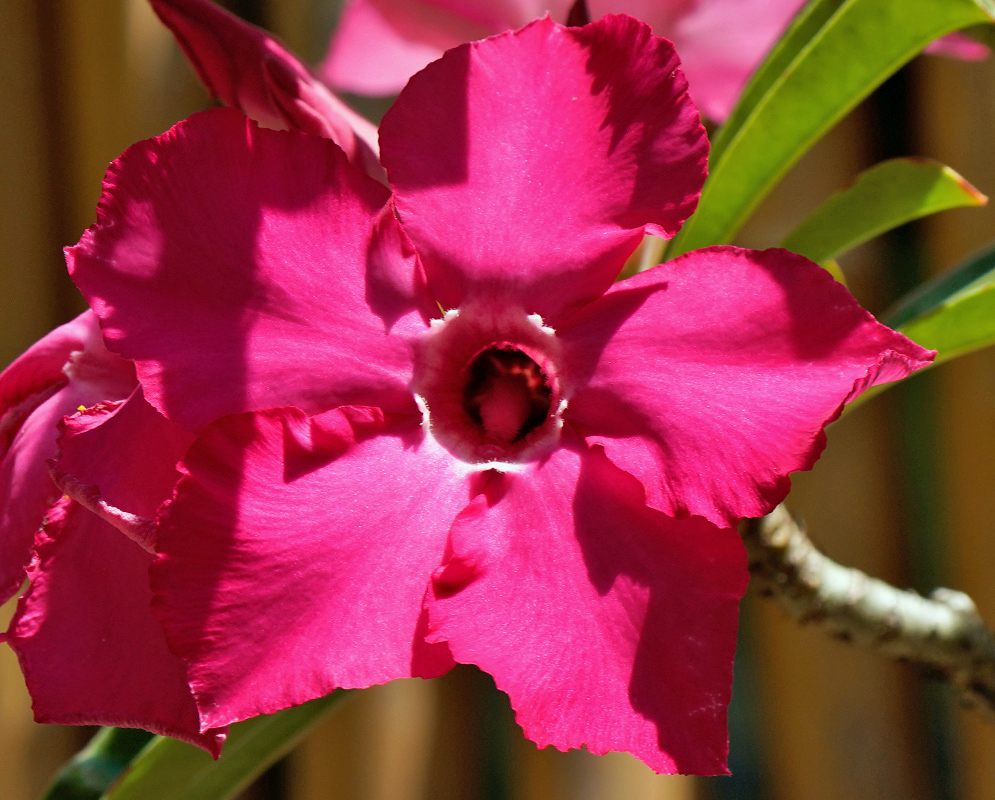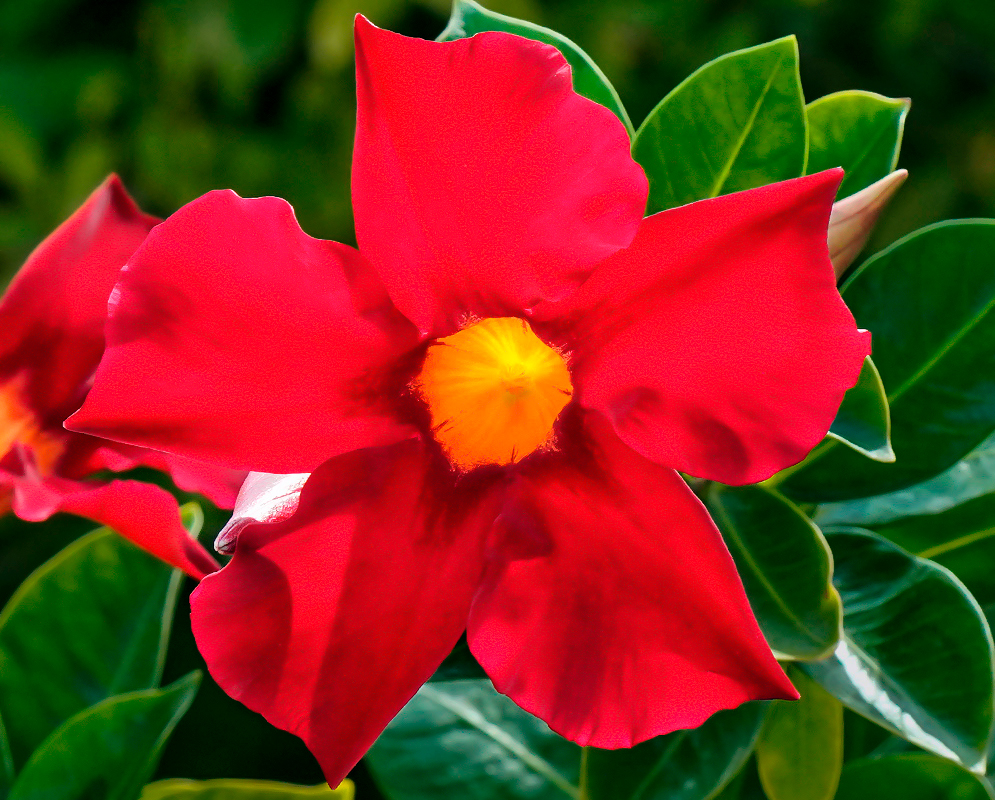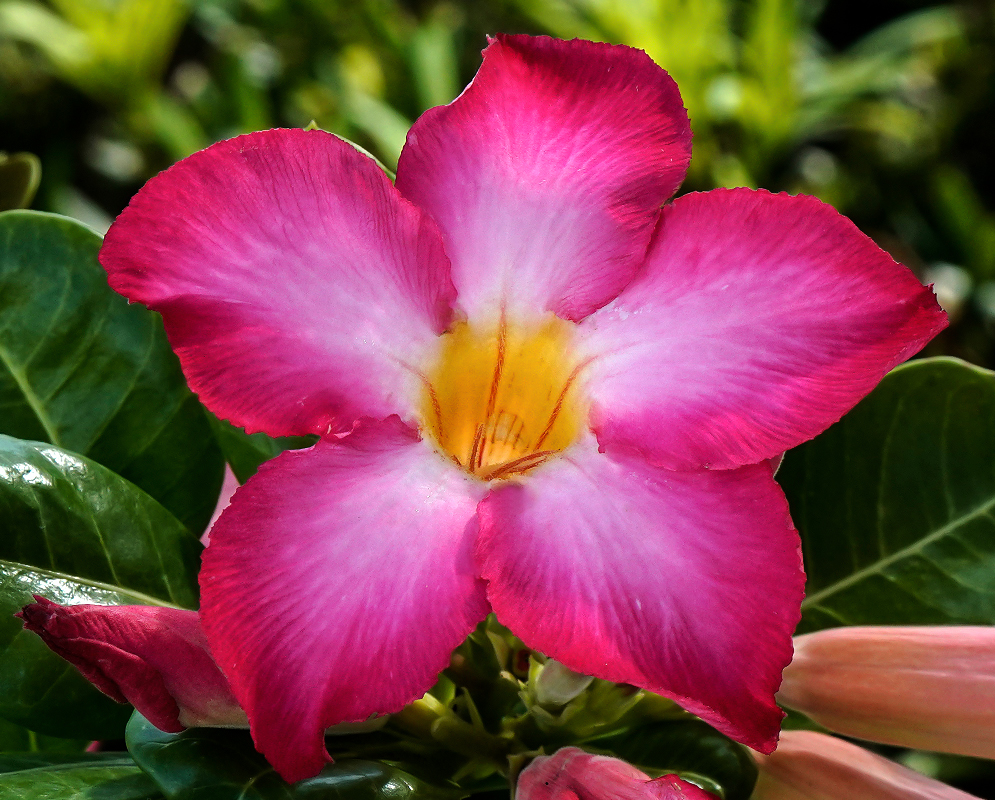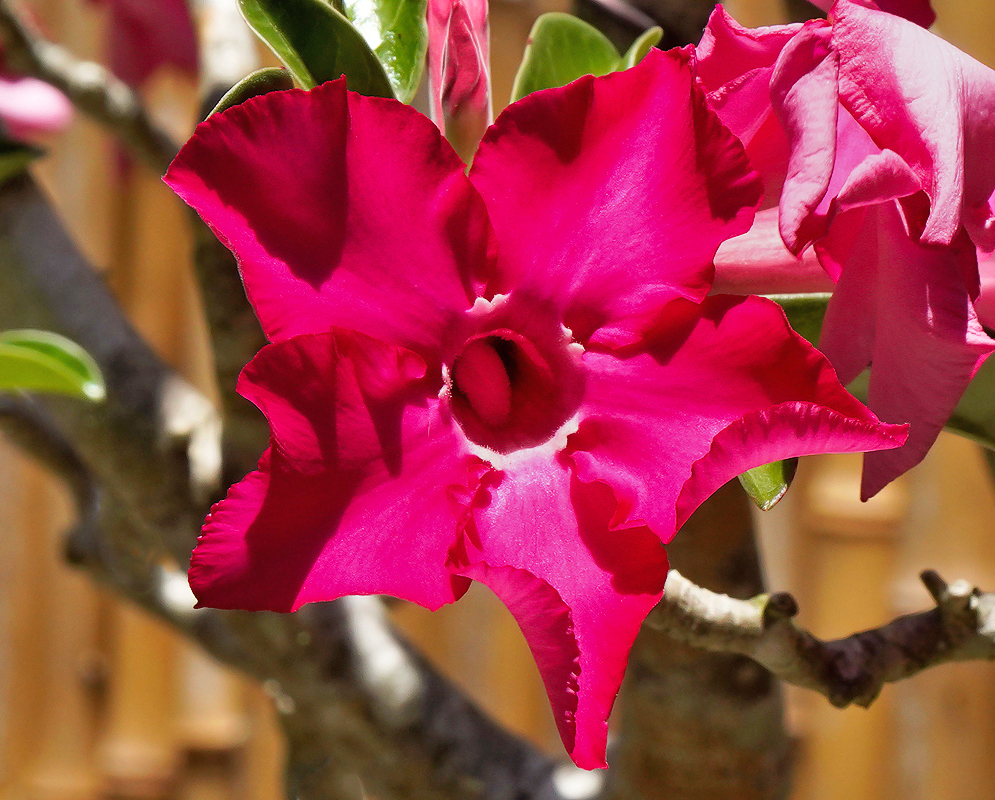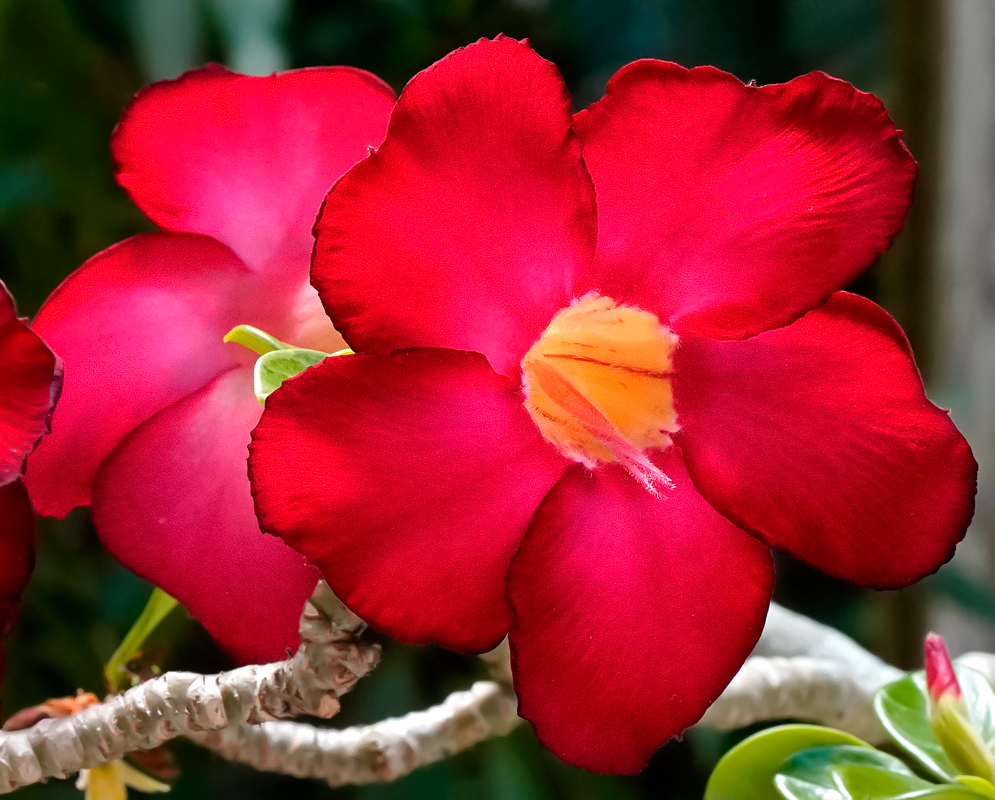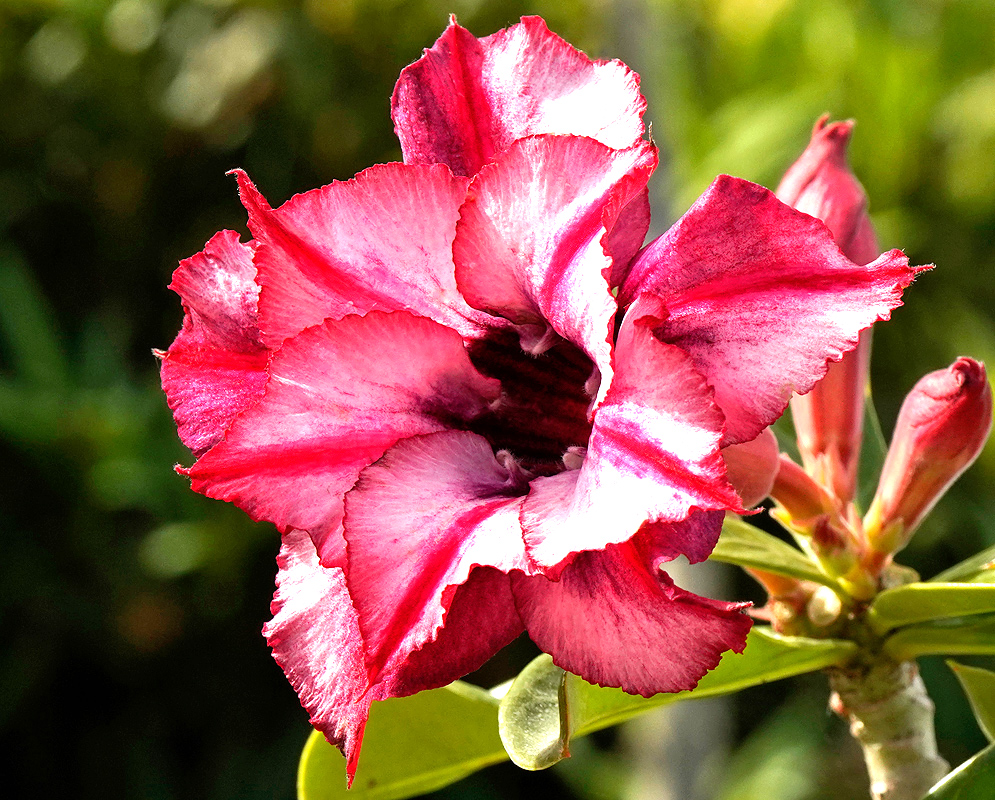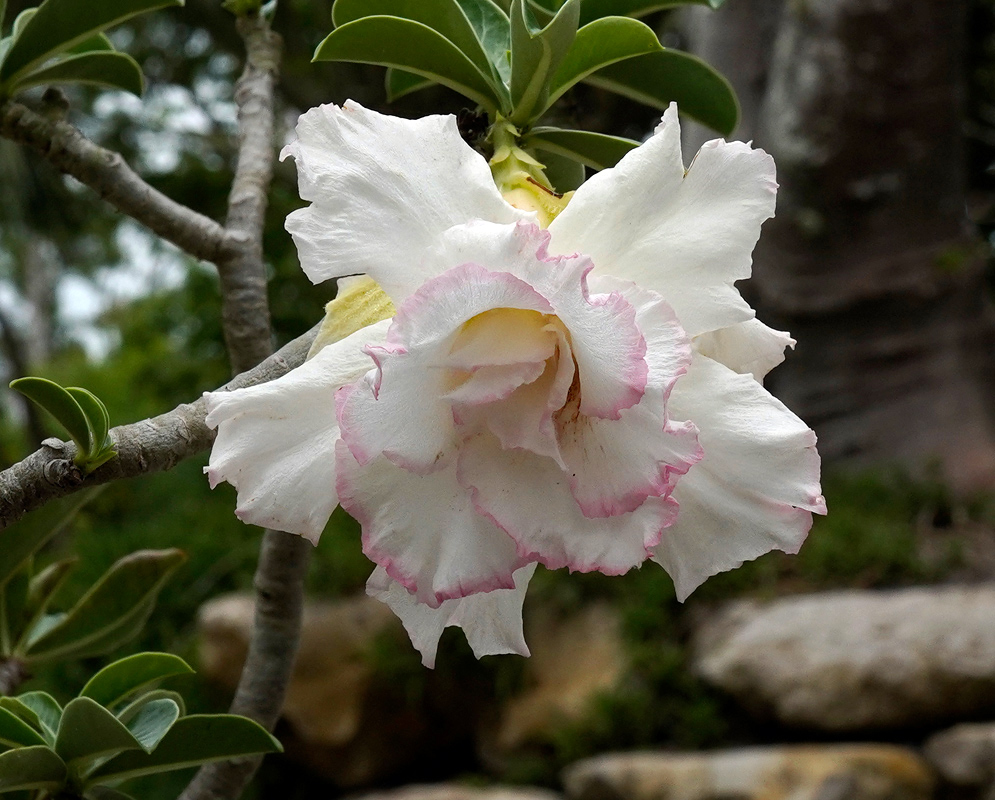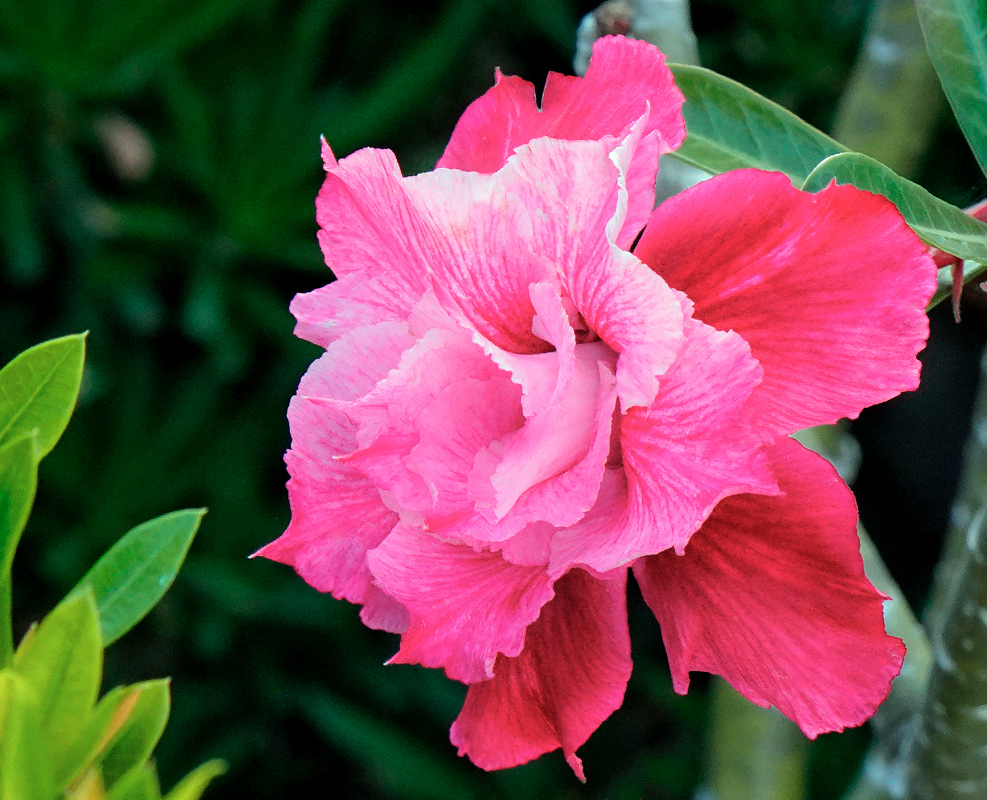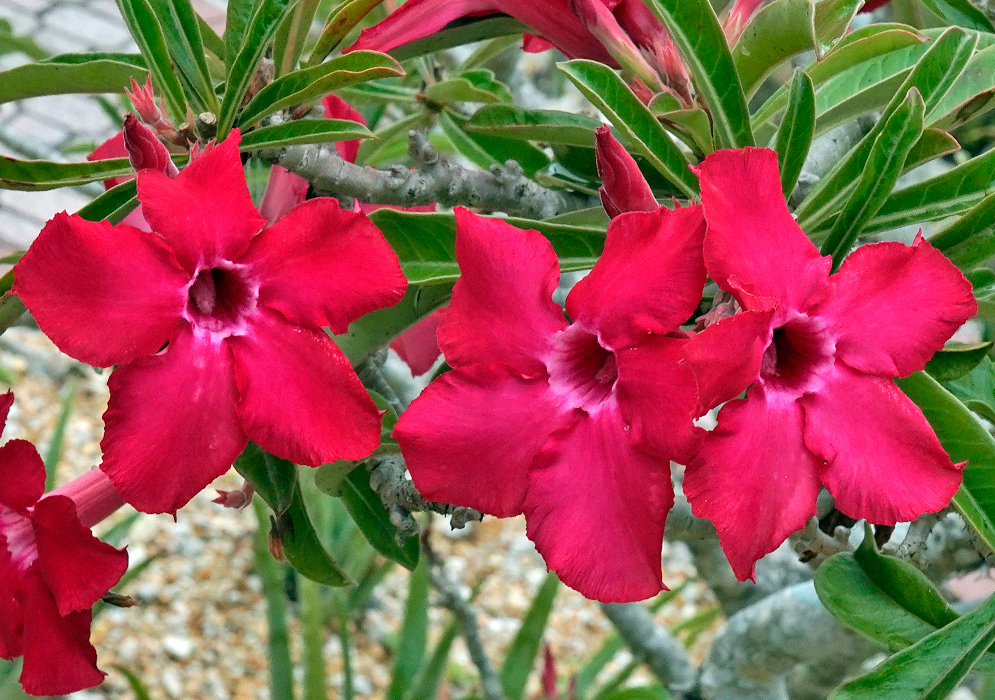This post has 11 Simple Fields-fields attached. Show fields.
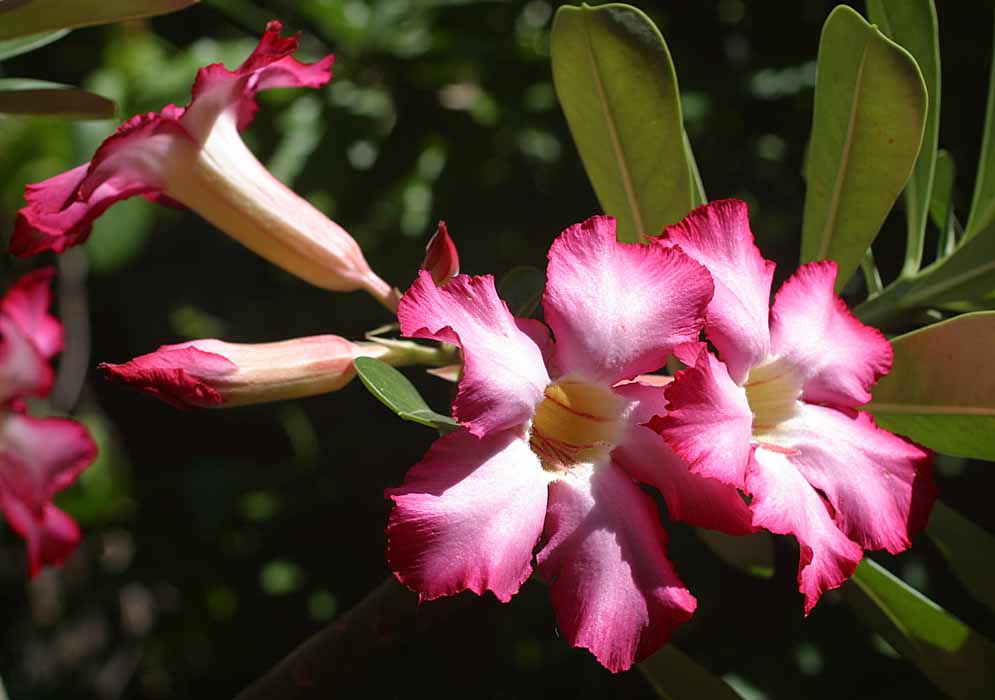
Native to the arid regions of Africa and the Arabian Peninsula, the Desert Rose is an evergreen or drought-deciduous succulent shrub. Its large, disproportionally thick stems and a stout, swollen basal protrusion, known as a caudex, strikingly protrude from the soil. It boasts tubular flowers with five petals, usually displaying shades of red or pink. The plant is popular as an ornamental piece, often styled as a bonsai. Numerous hybrids offer a variety of colors and flower shapes, adding to its appeal. The plant produces a highly toxic sap, and it thrives in sunny and hot conditions, preferring well-drained soil. In such a climate, it blooms frequently and can grow up to 15 feet. However, as the weather cools, it enters a period of dormancy, shedding its flowers and foliage.
The Desert Rose is one of my personal favorites and has achieved the Royal Horticultural Society's Award of Garden Merit. I've successfully grown several hybrid varieties from seeds in Barranquilla, Colombia. The seeds germinated quickly, and the plants reached two feet within two years and now are over 10 feet tall. Despite the fast-draining sandy soil of Barranquilla, the Desert Rose can fall victim to root rot during the months of heavy rain. Scale insects can also pose a problem. In Colombia if this plant is within an arm's reach of the public they will steal it, by breaking branches off or pulling the plant. One of the peculiarities here is that many people think it is okay to take parts or all your plant. One old lady passing by my garden asked if she could take a plant. After telling her, of course not, she said, “I didn´t have to ask, I´ll just come back another time and take it.” Grows best under 3,000 feet in Colombia. Photographed in Florida and Barranquilla, Colombia.


